The Horror Genre’s Ableist Underbelly
Every year, the celebration of “spooky season” kicks off a little earlier. Starbucks released its pumpkin and apple drinks and treats on August 22 this year, the earliest date in several years. Halloween costumes are already gracing big box store aisles, and merchandise from franchises like Hocus Pocus and The Haunted Mansion is popping up in Hallmark stores, select jewelry chains, and novelty shops. Pandora, known for its highly personalized charms, bracelets, and rings, dropped a Disney Villains collection the week of August 22 as well. It features Maleficent, Cruella DeVil, and the Evil Queen, as well as trademark “villain accessories” such as the poisoned apple and the Queen of Hearts’ Ace of Hearts card, engraved with the inscription, “Off with their heads!”
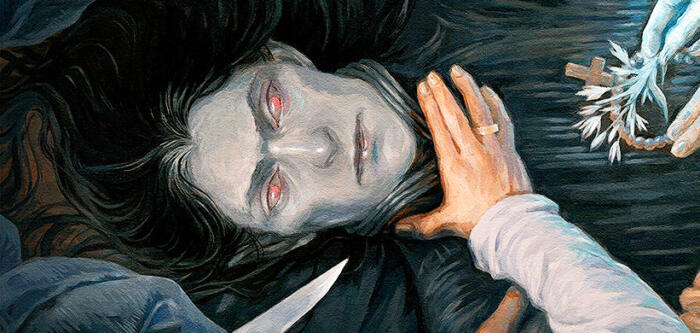
All these treats and gear ease shoppers and media consumers into the spooky mood before the first chill of autumn hits and the real spooky activities begin. By the beginning of autumn “proper” around September 23, devotees of the “gruesome and grim” should be decked out and ready for full, months-long celebrations of horror. For most devotees, this will include consumption of the horror genre, whether through books, television, films, or other media. As a genre, “horror” is defined as, “speculative fiction…intended to disturb, frighten, or scare.” And since what is “disturbing” or “frightening” varies from one consumer to another, “horror” can be as innocent and family-friendly as a Disney film (e.g., Hocus Pocus) or as macabre as Rosemary’s Baby. It can have roots in classic literature like Frankenstein or be “ripped from the headlines” like several seasons of American Horror Story (e.g., “NYC,” “Cult.”) No matter a consumer’s chosen “flavor” or level of horror, the genre not only entertains, but gives real people a safe place to face their fears and explore their dark sides.
Despite the thrill and catharsis of fictional horror, one persistent, real problem has plagued the genre for centuries. In exploring the underbelly of human nature, the horror genre often neglects its own underbelly of issues surrounding actual people. Specifically, horror has a dark, centuries-old history of ableism. More than any other minority, disabled people have long been the scapegoats of horror, the vehicles for the twisted and disgusting, and the seat of “typical” or “normal” consumers’ deepest fears.
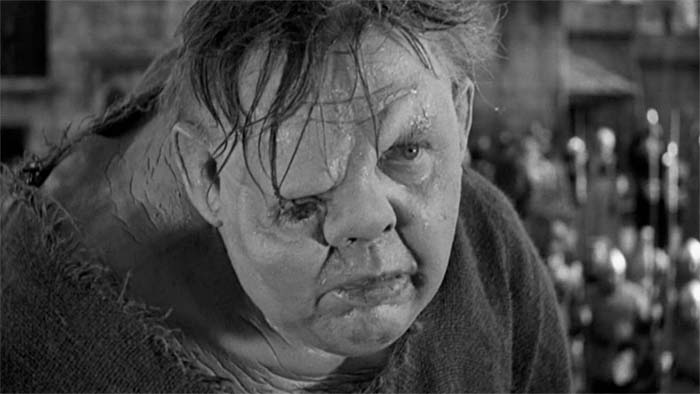
Like horror itself, this ableism comes in many forms. Sometimes it’s embodied in an actual person, like the grotesque Frankenstein’s monster. Sometimes ableism lurks in the place or concept of institutionalization or exploitation, as in a circus, “freak show,” or cruel asylum. Still other times, ableism pops up in a myth or legend surrounding a horror story, such as the myth of changelings, long associated with the real condition autism.
No matter its form however, ableism permeates horror. It perpetuates and constantly renews the message, “Disability is negative, undesirable, and downright scary. Those with it are to be avoided, shunned, or done away with. Disability visited upon an otherwise ‘normal’ person or environment is a curse.”
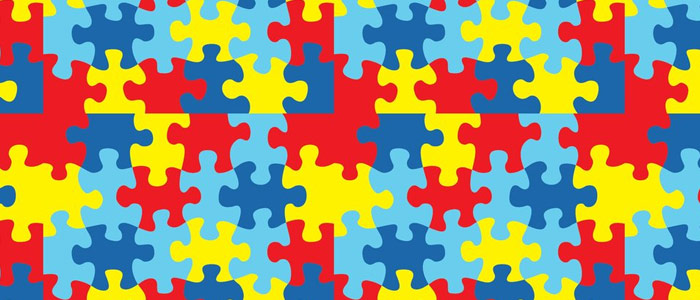
In 2024, some consumers might conclude pervasive ableism means horror should be “cancelled.” Others might argue the ableism isn’t real. Instead, it is “inherent” in horror, the same way ableism might be “inherent” in buildings crafted with stairs or bathrooms without accessible stalls or changing stations. Those who won’t acknowledge this are “whining” or “expecting special treatment.” Actually, neither camp is correct. Horror’s ableism is inherent not because its creators are bigots, but because genre conventions existed long before modern concepts of disability did. The social concept of disability and how we relate to disabled people is still changing.
To judge creators of the past by that standard is to invoke “politically correct history.” Simultaneously, those who call out ableism are not “whining” or expecting horror to become less than what it is. Disabled people and their allies, whether they love or hate horror, deserve voices in future versions of it. Giving them voices involves analyzing the horror we have, keeping what is good in it, and examining what we as authors, producers, and other creatives should change. Making the right changes will ensure disabled people are three-dimensional horror participants rather than grotesque, “cursed” victims, or villains who are villainous only because they don’t meet abled standards.
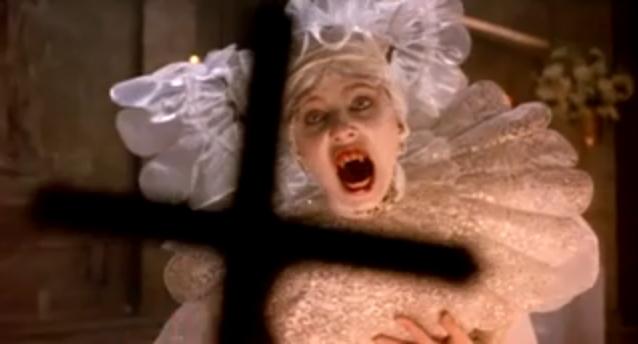
The characters we will discuss here are not always “disabled” as we think of people with disabilities today. Some are “coded” disabled, meaning they show characteristics of disability or chronic illness, but do not receive treatment or accommodations based on related needs. Frankenstein’s monster and Count Vlad Dracula, for instance, are written or acted as physically, sometimes cognitively, disabled and chronically ill, respectively. But their manifestations are treated as aberrations rather than normal or treatable diversities. That said, all the characters in our discussion experience ableism, whether that’s the type we know today or a “coded” type that singles the character (s) out as undesirable.
We will also discuss chronic physical illness and mental illness, as disabling conditions or those that can accompany stated or coded disabilities. For instance, a horror character may have physical disabilities and also deal with mental illness. The correlation of these does not equal causation of either. However, it is often the case that ableism based on one condition feeds into ableism based on the other, or that ableism takes on different “layers” based on diagnoses or lack thereof.
Keep in mind, the characters in our discussion will either commit or be accused of antagonistic actions, because they are central to horror narratives. As main or major supporting characters, they must participate in the horror to move their stories forward. Their disabilities are not excuses for these actions. Nor are disabilities the sole or complete reasons or explanations for these actions. The goal of our discussion is not to blame ableism for every frightening or disturbing action a character takes. Rather, it is to examine ableism as a piece of a character’s makeup, and to determine what role disabled characters can or should play in horror narratives going forward.
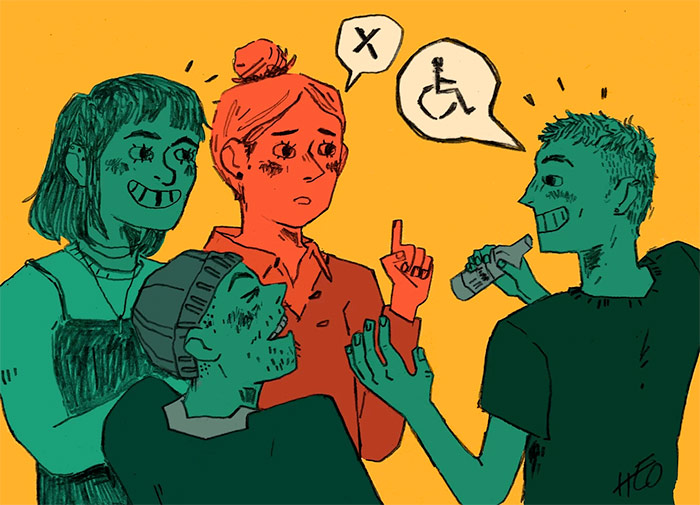
For the purpose of our discussion, “ableism” is defined as discrimination against disabled people, or for the purpose of horror, sentient beings or humanoid creatures such as monsters or vampires. Ableism is also defined as an explicit or implicit preference for abled bodies and minds, as well as treating any deviance from that as hideous, scary, or dangerously abnormal. Finally, for horror, ableism can take the form of treating a central character’s actions as worse than they would typically be, just because that character is physically, cognitively or otherwise disabled, mentally or chronically ill, or coded as such.
“Classic” Ableism in Classic Horror Novels
As with most genres, horror came into its own through literature. Horror novels have populated library shelves and private collections for centuries, and those novels give us no shortage of ugly, evil monsters to analyze. Some “monsters” though, stand out from the rest, particularly when applying a lens as complex and multifaceted as ableism.
The two “monsters” we will discuss here don’t just stand out because they are deformed, disabled, or coded as such. They distinguish themselves first because they are two of the most popular in “classic horror.” That phrase itself connotes one or both of their names for many media consumers, especially bookworms. They, more than many of horror’s main characters, let consumers grapple with the question, “Is evil born, or is it made?” Most importantly, though, these two main characters force consumers to call ableism the complex, insidious, and perhaps unavoidable evil it really is.
Frankenstein, Mary Shelley
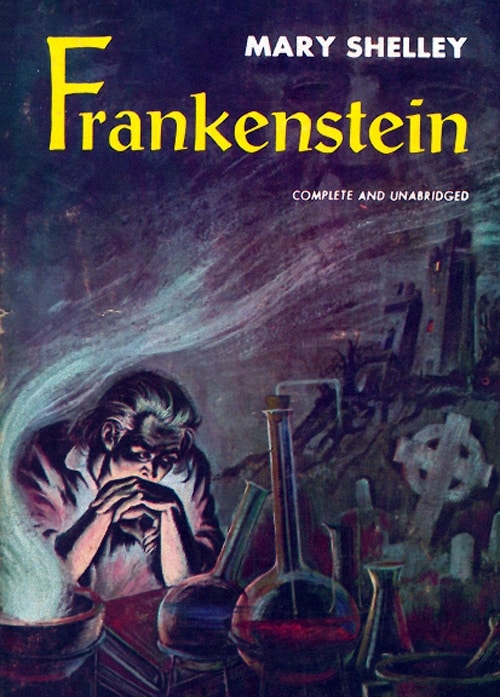
First published in 1818, Frankenstein is Mary Shelley’s best-known novel and most famous work. Written as part of a “ghost story” contest when Shelley (then Mary Wollenstonecraft Godwin) was only 18, Frankenstein is considered “a masterwork of horror literature” and “a seminal work of science fiction,” perhaps “the first prominent work of science fiction” (Gage 2018). The novel has inspired “over 100 Frankenstein movies,” the most recent released in 2022 (Gage 2018). There are currently at least three more Frankenstein films in production. The original novel has also inspired countless spoofs, parodies, television tribute episodes, send-ups, and analyses. The name “Frankenstein” immediately conjures images of a lumbering, green-faced, growling man with a bolt through his neck.
That image is not ableist. At best, it’s comedic. At worst, it’s a gross oversimplification of what Mary Shelley intended her characters Dr. Victor Frankenstein and his “monster” to become. What makes Victor Frankenstein the doctor, and the narrative surrounding Frankenstein’s creature ableist, is how the Creature, as we will call him to differentiate, is presented and treated. Frankenstein’s Creature is a person in that he has a human body. He moves and eventually speaks and reasons like a human. In so doing, he fulfills Victor Frankenstein’s ultimate goal: to reanimate and create life even after death. Yet, the Creature quickly becomes the story’s villain, not its hero as one might expect. In truth, Frankenstein is not considered the Creature’s story at all. In many ways, Victor Frankenstein co-opts his creation’s narrative, so much that today, many people assume Frankenstein and his “monster” are one and the same. Correcting someone–“Frankenstein is the doctor“–is often seen as a joke or annoying remark only a know-it-all might make.
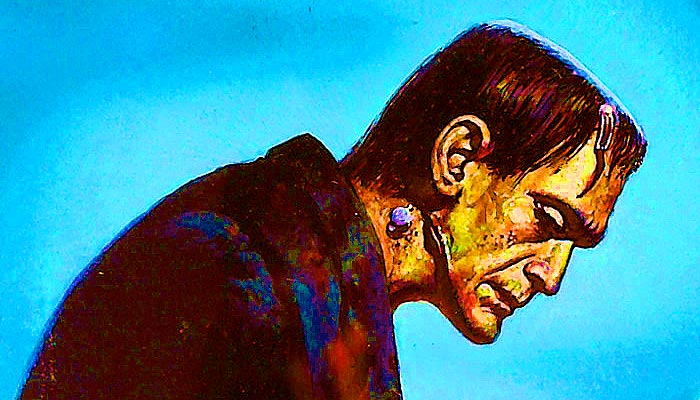
All joking and annoyance aside, Victor Frankenstein and his monster–creation, rather–are separate. The separation gives ableism a unique role in the novel and faithful adaptations, such as the film Mary Shelley’s Frankenstein from 1994. This type of ableism has nuances it wouldn’t have had otherwise. In Frankenstein, consumers get both Victor’s point of view and that of his Creature. Therefore, the Creature does not read as a simplistic target. As for Victor, he reads ableist, but he isn’t completely irredeemable, nor is he a cardboard bigot, at least initially. Instead, both creator and creation are casualties of a much sneakier horror than a “monster”: the horror of ableism and what it breeds.
Victor Frankenstein’s Ableist Beginnings
In analyzing the layers of Frankenstein and what it communicates about disability, we must start with Frankenstein, the doctor, himself. Victor Frankenstein does not begin the eponymous novel as a bigot, eugenicist, or even a medical student whose life disability, illness, or deformity has impacted. In many ways, he is the ideal Genevan male: tall, well-built, handsome, and most importantly, brilliant. From childhood, Victor is a voracious reader with an unquenchable thirst for knowledge. Mary Shelley’s Frankenstein gives us a scene between Victor and his mother wherein the latter recalls young Victor crying when the fireflies he collected in a jar died. “You wanted to keep them glowing by your bedside so you could read,” Mrs. Frankenstein says with a fond smile. “You were so hungry for knowledge.” As an adult, Victor has retained that hunger. On the cusp of medical school, he is already studying and working so hard, he constantly eschews leisure activities and family time.
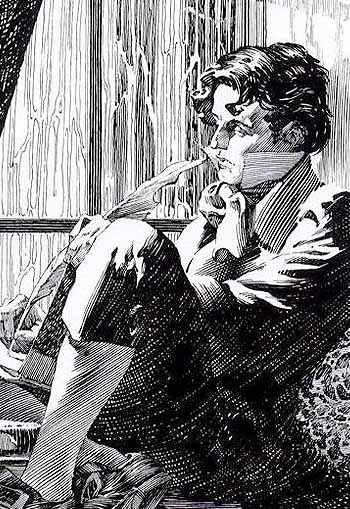
Victor’s family shows mixed reactions to his tireless drive and insatiable hunger. His mother seems content to indulge him from a background role in her son’s life, while his father reacts more negatively. While he admires Victor’s medical ambitions, the amount of reading his son undertakes frustrates Frankenstein Sr. More importantly, he dislikes much of the material Victor chooses, such as the work of Cornelius Agrippa. Frankenstein Sr. considers Agrippa a pseudo-scientist at best, and tells Victor his work is “sad trash.” But Victor is convinced these “long-forgotten alchemists” like Agrippa, Paracelsus, and Albertus Magnus are further along the path of scientific knowledge than himself. Using “natural philosophy,” they have cracked open a “secret of life” that mere biology, chemistry, or medicine hasn’t yet discovered because their practitioners are too narrow-minded. As often happens when parent and child clash over philosophies, Frankenstein Sr.’s dismissal of Victor’s passions push him further into the study of his new heroes’ “wild fancies.” Their amalgams of different sciences and philosophies so entrance Victor, he becomes convinced he could one day create or rejuvenate life on his own.
Victor’s ambition is not ableist in itself, but in keeping with horror, it is a little scary. A scene in Mary Shelley’s Frankenstein calls to mind electroshock therapy and torture when Victor uses scientific ingenuity to protect himself, his little brother William, and his girlfriend Elizabeth from a lightning storm during a picnic. Once the storm has passed, Victor observes everyone in the group has absorbed a bit of electric shock. He touches his finger to Elizabeth’s, reveling in the ensuing increased jolt. Elizabeth laughs over how much more “alive” she feels, and Victor takes this as a sign her actual life, her abilities, have been enhanced, perhaps permanently. He doesn’t seem to know or care that his family and friends could have been seriously injured. Nor does he seem to care about any side effects this temporary “alive” feeling might carry. As strange, scary, and even repugnant as it might look though, Victor’s desire for more life is still natural human instinct.
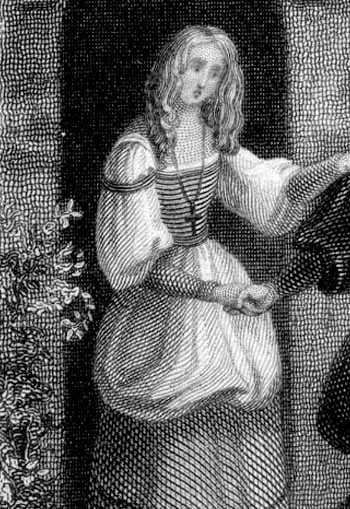
Victor’s ambition for more life, created or reanimated life, does not become ableist until the frailty of human life touches him. This does not happen through disability as we think of it. In the novel, it happens when first Elizabeth, then Victor’s mother, contract scarlet fever. Elizabeth lives, but Victor’s beloved mother succumbs. Watching his lover come so close to death, plus losing another loved one and his biggest supporter, shatters Victor’s heart. In Mary Shelley’s Frankenstein, Elizabeth is untouched, but Mrs. Frankenstein dies in a bloody childbirth scene. Victor pleads with the attending physician to do something and when told, “She’s gone,” cries to the heavens, “Bring her back! Bring her back!”
Through a time skip, viewers are shown grief haunts Victor for three years. On a visit to his mother’s grave, he declares, “You should not have died…I will right this injustice.” In both adaptations, Victor’s determination to right the “injustice” of death start him down his ableist path. Again, Victor is not ableist because he rages at death or even God. He is not ableist because he grieves his mother or clings almost obsessively to Elizabeth. Victor slips toward ableism when he becomes obsessed with reversing death and creating the kind of lives he believes should inhabit his world and on a bigger scale, the earth. Many consumers would point out such ambitions mean Victor is playing God. He is trying to control the outcomes of inevitabilities like diseases, childbirth complications, and even disabilities, that are inherent to a world he didn’t create.
Even consumers who don’t believe in a Creator God would likely say Victor is trying to “stack the deck” unfairly. They might say Victor’s desire for his mother to come back, or for loved ones to be protected from harm or death, is natural. But in implying that’s the ideal for others, Victor is not leaving room for the natural order of the science he claims to love. His ambitions don’t allow agency over life, because in Victor’s world, an ended life could simply be rejuvenated. As for the chronically ill or disabled, there is no room for them at all. Consumers see more of this implication and its consequences as Frankenstein progresses.
Life Rejuvenated, Not Respected
Once Victor goes to Ingolstadt for medical school, his professors disabuse him of the idea that Magnus, Agrippa, and their ilk have any place in 1794 Swiss medicine. There is brief hope Victor might channel his fixations toward the more appropriate goal of preserving and saving lives. That hope dies, though, when Victor connects with his anatomy professor, Waldman. Victor is already vulnerable when he arrives at one of Waldman’s lectures; his chemistry professor, Krempe, has told him in no uncertain terms that he has wasted years of his life studying the scientists and authors he loves, and he should start all over. Perhaps because of this, and perhaps because Waldman has “the sweetest voice [he] had ever known,” Victor absorbs Waldman’s every word and practically begs the professor to take him on as a mentee.
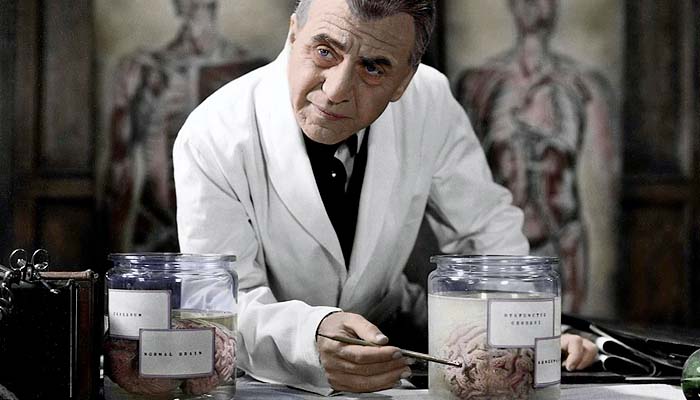
The novel does not give us much of Waldman’s character or work, but several adaptations spend more time on him, thus lending shading to Victor’s motives. In the 1931 film, for instance, Waldman is drawn directly into the creation of Victor’s creature, first when Victor steals a brain from his classroom and later when Waldman tries to euthanize the creature. In the 1994 adaptation Mary Shelley’s Frankenstein, Waldman (John Cleese) has a bigger and more influential role. There, Waldman tells Victor he is similarly fascinated with “the secret of life and death” and has conducted experiments similar to Victor’s using electricity, body parts, and other “raw materials.” Victor pleads to see Waldman’s notes, but Waldman refuses. He warns if Victor continues exploring and experimenting as he has, “it will lead to abominations.”
Victor doesn’t listen. He rages at Waldman’s alleged cowardice and begins the quest to create and reanimate life in earnest. Said quest involves grave-robbing and piecing together several different cadavers, including at least one “cripple.” Mary Shelley’s Frankenstein zeroes in on this particular man for a few minutes. Viewers learn only two things about him: he falls prey to a smallpox epidemic, and his physical disability is visible. Thus, he becomes one body the keeper of the local death house doesn’t mind Victor removing, although said keeper is otherwise skeptical of the young doctor’s business with his “residents.”

Director Kenneth Branagh’s choice to add this incidental scene to his movie and act it out in the starring role, when it does not occur in the novel, underscores how far Victor is willing to go to achieve his ends. Worse, it reveals Victor has learned to “rank” life and take advantage of what he sees as the “lowest” forms. He is no longer the overly ambitious, yet innocent boy taking advantage of fireflies. He has become a grown man, a physician at that, who has decided a life he cannot save is just “raw materials.”
Victor continues treating life as “raw materials” throughout his creation. Neither novel nor films reveal if other disabled people are victimized, but the novel and at least one film adaptation reference stolen body parts, including a brain. Mary Shelley’s Frankenstein gives us a closeup of an electrified, writhing, and bloody fetus. At the height of his obsession, Victor even loses respect for his own life, sinking into cholera that devolves into pneumonia. His friend and fellow physician Henry Clerval restores Victor to health, and both Henry and Elizabeth beg him to stop his dangerous, secretive work. Yet the moment Victor has enough strength, he throws himself back into the creation of life. When his Creature rises at last, Victor’s ableism can reach its peak and begin feeding his Creature. This in turn feeds the frightening, disturbing nature of Frankenstein as a “masterwork of horror.”
A Man Shunned, A Monster Created
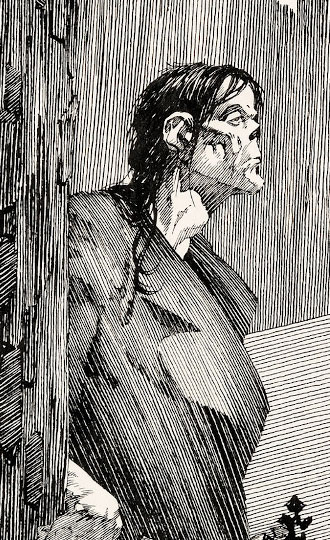
The result of Victor’s efforts is both deformed and disabled. He is male, but doesn’t resemble a “normal” man from Geneva, Ingolstadt, or any other locale with which Victor’s peers might be familiar. Mary Shelley describes the Creature as eight feet tall, with yellowish, taut skin, so taut it “barely disguised the workings of the vessels and muscles underneath.” She notes his “black lips,” “prominent white teeth,” and “glowing, watery eyes.” Shelley adds because the Creature’s movement comes partially from a “crippled” man, his walk has a pronounced “lurch,” at least initially. The Creature is “hideously ugly” and “physically grotesque,” not necessarily because he is physically disabled, but because disability and deformity are already associated with ugliness in the world he inhabits.
Film adaptations play with Shelley’s description to various degrees. The 1931 adaptation gives us the “classic” version that inspired the man often seen in spoofs or parodies–tall, shambling, with a prominent forehead scar, cropped dark hair, and green skin. The 2004 adaptation keeps Shelley’s pale skin and “flowing black hair,” but makes the “monster” more conventionally attractive, perhaps owing to his portrayal by Shuler Hensley.
Arguably the most horrific, and the one that speaks most to ableism, is Robert DeNiro’s portrayal from 1994. DeNiro’s version–bald, with watery, heterochromatic eyes and stitched-together, scar-riddled skin–reads the most like a “creature” rather than a human. Indeed, DeNiro spends all but the last half hour of his screentime acting as less than human. He covers his naked form with just a long coat, feeds on pig slop, and avoids most human contact. DeNiro’s version of the Creature commonly grunts, growls, throws people out of his way, and runs from even the most friendly overtures.
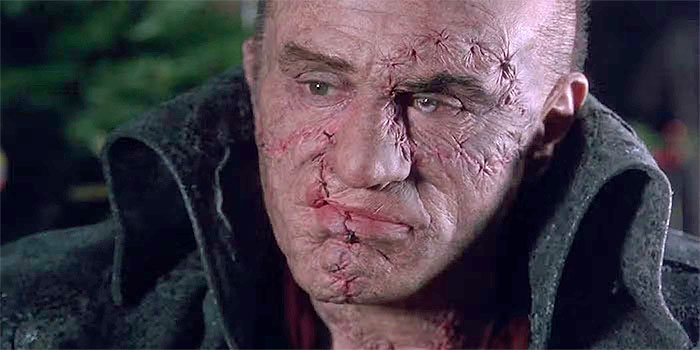
Yet, it is not the Creature’s reaction to humans, initial shambling walk and lack of verbal ability, or initial behavior like eating pig slop, that makes him a victim of ableism or “bad disability representation.” Once again, the fault lies with Victor, the creator. Consumers learn Victor abandoned his creation almost immediately, lamenting, “What have I done” and comparing himself to Satan (presumably because of the creature’s deformity). This self-pity ended in the Creature fending for himself and being driven from almost every human enclave he encountered. At one point, the Creature could only find safety on the back of a wagon filled with cholera epidemic victims.
Interestingly, the only human to offer the Creature succor is a blind man. The implication is that Victor, like a neglectful parent mourning a “special needs child,” has turned that child out to survive in a world where only “his own kind” will accept him, and then only after they too, have been shunned, as is the blind man. The deeper implication is, in Shelley’s era and ours, Victor was right to do this because after all, his “Creature” is “abnormal” and disturbing.
The Creature eventually masters verbal and written communication thanks to the memories stored in his brain and time spent with sympathetic humans. None of that communication indicates whether he thinks of himself as deformed or disabled, or grasps the implications we have outlined. But through his journal entries, labeled as Victor’s, we learn the Creature wants revenge on the doctor for abandoning him. The Creature’s vengefulness culminates when, out of desperation, depression, and the evil that has begun to overtake him, he burns the blind man’s house down.
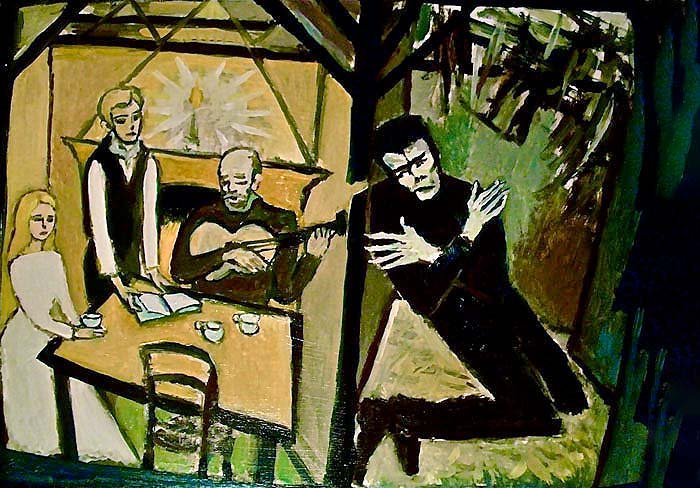
Once his only friend is destroyed, so is the Creature’s initial gentleness and instinct that fellow humans are good or helpful. The Creature retains some form of love and some awareness of morality, as we will see shortly. But the burning acts as his turning point. Past that, he begins the frightening, disturbing trajectory that makes him such a major character in horror. His final actions cement ableism as a permanent part of the genre’s underworld.
Arson, Murder, and Ableism
After abandoning the Creature, Victor Frankenstein intends to put the whole business of “the secret of life” behind him. He succeeds until, the day of his long-awaited engagement to Elizabeth, his little brother William is murdered. Victor knows his “monster” is responsible, but because he cannot explain how he knows, his dear family friend Justine is blamed for the murder and hanged. Infuriated, Victor goes after the Creature, who has appeared on the Frankenstein estate and demanded a meeting in the Alps. When Victor arrives for said meeting, the Creature confronts him with his abandonment. The novel gives us the wrenching quote, “I ought to be thy Adam; but I am rather the fallen angel.”

The name “Adam,” coupled with the Creature’s experiences living in a barn and eating with pigs, calls up the image of a lonely prodigal son desperate for comfort from his father. True to form, though, Victor is not interested in comforting his creation, nor in considering his point of view. Victor either cannot or will not take responsibility for his obsession, hubris, and misguided actions. And while he did not cause William’s murder, nor could he have prevented it, he is unwilling to consider that he played any role in the precipitating events or fallout. Victor also doesn’t have enough insight to realize his next move, and his future treatment of the Creature, could save everyone involved.
The most Victor can do is ask the Creature, “What do you want from me,” which ultimately brings the conversation back to his own selfish desires. To the Creature’s credit, he doesn’t point this out. He asks for a companion, “a female…like me,” someone who won’t shun or fear him. He goes on to say if given this companion, the two of them would go off to a cottage or island alone and live their lives. “No one would ever set eyes on us again,” he promises–and consumers are meant to understand that unlike Victor, the promise is one the Creature will keep.
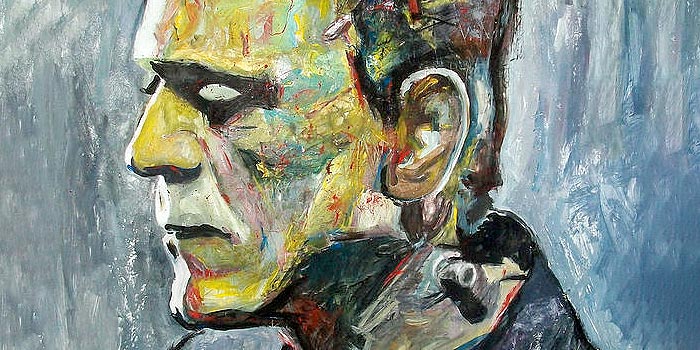
At first, Victor believes giving his Creature a “female” is a good idea. Mary Shelley’s Frankenstein shows him feverishly unearthing and unpacking all his lab equipment, eager to get rid of his “monster” once and for all. Indeed, he begs Elizabeth, just give him one month to finish his work, and he promises they can be married and live the ideal life they deserve. Elizabeth, however, is “sick of [his] promises.” Victor’s excited unpacking is juxtaposed with Elizabeth’s packing to flee the Frankenstein estate, just as her happy life with Victor’s family has been juxtaposed with his own single-minded selfish ambition throughout the film.
Victor’s selfishness and yes, ableism, return to haunt him one last time when he realizes giving the Creature would likely mean reproduction. The idea of an entire generation of “monsters” running around Geneva, Ingolstadt, and who knows where else, is enough to terrify Victor into breaking yet another promise, this one to his creation. Victor tries to explain himself, but the Creature will have none of it. In the novel, he ends up choking Elizabeth to death out of revenge. Film adaptations often change this up for dramatic effect. In Mary Shelley’s Frankenstein, for instance, the Creature promises Victor, “If you deny me my wedding night, I will be with you on yours!” He then kills Elizabeth on said wedding night in Frankenstein Manor, then forces Victor to reanimate her. A grotesque Elizabeth, horrified at what she has been turned into, tries to flee Frankenstein Manor again. But this time, it is burning thanks to the Creature’s arson; everything Elizabeth touches explodes.
The Final Flames of Ableist Ambition
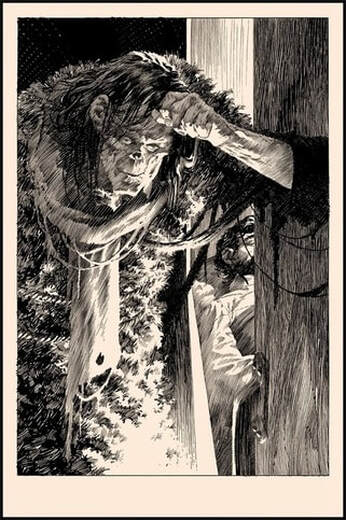
Victor survives, but eventually dies of pneumonia after traveling to the Arctic in an effort to escape his vengeful Creature. The Creature himself commits suicide, dying on Victor’s funeral pyre rather than continuing life in a world that never accepted him. The novel alludes to the Creature “grieving for his father.” This underscores the idea of Victor playing God in creating life when he had no business doing so. It also hearkens back to the idea of Victor, as an ableist creator, rejecting an imperfect “child,” over and over again.
Granted, the Creature does become a horrible person, and he does engage in evil deeds. Additionally, it wouldn’t be fair to view the creature’s “disabilities” entirely through a 21st-century mindset that Mary Shelley and her contemporaries didn’t have. Debating over whether the creature had the IQ, maturity, or life accommodations to become anything other than evil is fruitless. We can say a few things for certain, though.
First, Victor Frankenstein did use his scientific gifts to create a human being. Basic ethics tell us, no matter what the human being looked or acted like, Victor as the creator had a responsibility to guide that human as best he could. Therefore, Victor’s constant abandonment of his Creature, and the constant breaking of his word, indicate he failed. Arguably, he became more evil than the Creature.
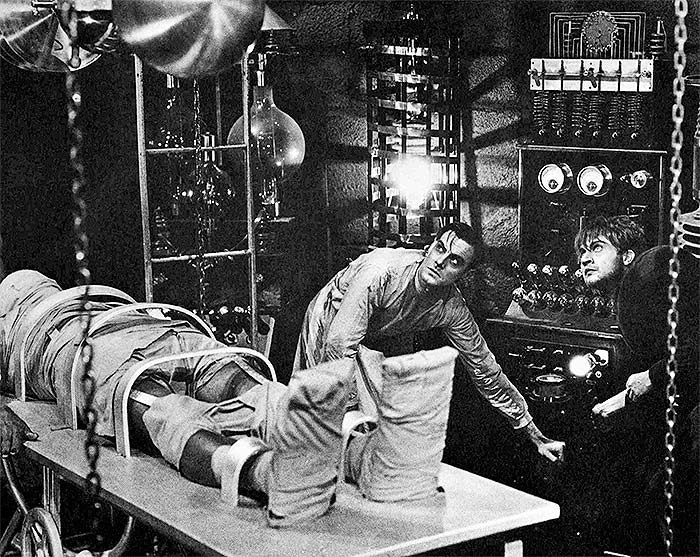
We can also conclude Victor never had anything but disrespectful intentions toward life. It’s unclear if his intentions were always ableist in the sense of rejection. After all, if the Creature had been conventionally attractive, one could argue Victor would’ve embraced him proudly. (Whether he would’ve then set up the creature as an example of what intelligent, able-bodied men can do, complicates that argument; the idea of Victor going that route is a safe bet, too).
What is clear is that, from the moment Victor started robbing graves and dismembering cadavers–with a particular interest in the sick and disabled–he lost any regard he had for any life of any ability level. One could argue, in fact, he never had much respect to lose. Recall, this was a boy who trapped fireflies not out of innocence, not to enjoy their light, but so they could serve him as miniature reading lamps. Such little regard for insects never boded well for humans.
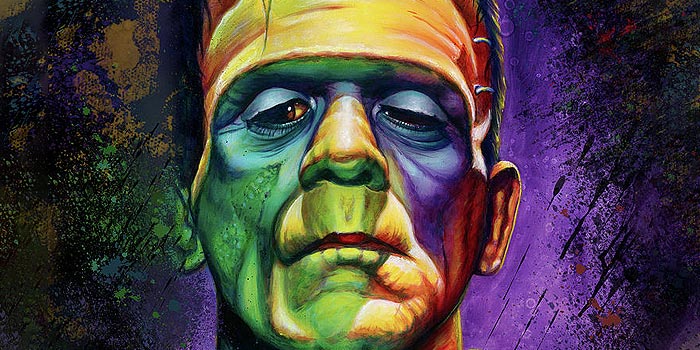
What we find in Frankenstein, then, is a true horror story meant to frighten and disgust. More than a “monster story” or a seminal work of science fiction, Frankenstein becomes the cautionary tale of a “monstrous” man whose ambition, greed, and determination to create life as he saw fit, led to sickness and death. It is the tale of a human rejected and abused largely based on appearance and lack of ability as conventional humans define it. Arguably, that human is forced to become evil, not out of malice but for lack of recourse.
In a cruel twist on stories of redemption, such as Jesus’ relationship with humans in the Gospels, Frankenstein becomes the story of what happens when someone’s creator, his “god,” abandons him, perhaps to innate sinful instincts and certainly to a fallen world. The fact that the Creature has disabilities, as such, underscores his travails as borne from ableism and his creator as a cruel facsimile of the divine. This creator will create and embrace life, yes, but only if it serves him and comes in a perfect package.
Dracula, Bram Stoker

Published in 1897, Bram Stoker’s Dracula is often discussed in conjunction with Frankenstein in some form. Ask most people to name a Halloween monster, and Dracula (read: vampires) or Frankenstein’s monster will likely be among their top two choices. In fact, these two have become “classic” Halloween go-tos for trick-or-treating, masquerades, or haunted house appearances. Despite the 80 years separating the publication of their stories, Frankenstein’s monster and Dracula are very much “brothers” or “cousins” in classic horror. Unfortunately, they also have kinship in ableism. Dracula, the novel and character, is in some ways more ableist than Frankenstein.
Bram Stoker’s vampire antagonist, Count Dracula (sometimes rendered as Vlad Dracula, Vlad Dracula III, or Vlad Drakul), is not disabled like Frankenstein’s monster was. Actually, he is a strikingly handsome Victorian gentleman. Protagonist Jonathan Harker writes in his diary that Dracula has a “strong, aquiline” face and a “lofty, domed” forehead. Harker notes Dracula is a hairy man, with hair on his palms, “massive eyebrows,” and “bushy” hair on his head, but that hair is dark, curly, well-managed, and attractive. He notes Dracula is “pale,” with “white, fine” hands, but considering paleness was a Victorian ideal, this is not necessarily off-putting, nor an indication of disability or illness.
Additionally, Dracula has no physical or intellectual disabilities. He does not “shamble” as Frankenstein’s monster did, but walks typically; some adaptations have him gliding or floating when in human form. Stoker, through Harker, also notes Dracula [“has] a mighty brain…a learning beyond compare (Stoker chapter 23). Throughout his life, Dracula has been “soldier, statesman, and…alchemist” (Stoker chapter 23). It’s implied Dracula was and is even more gifted than Victor Frankenstein, though creating life has never been on his agenda. Dracula has “studied the black arts…in the Carpathian Mountains” of his native Transylvania and has “a deep knowledge of…magic,” but these skills aren’t apparent to Harker or any other human who meets the Count at first. And while these skills in magic might get the Count ostracized from respectable Victorian society, they are not “disabling.”
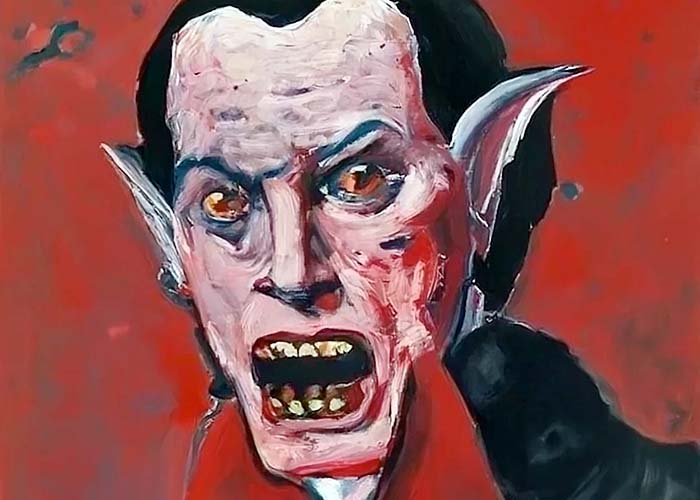
What, then, makes Count Dracula “disabled” and his story one with an undercurrent of ableism? As with Victor Frankenstein and his Creature, the answer lies with both the character and the creator. Count Dracula’s vampire story is not the first, and the origins of the vampire as we know it has ableist roots. So too, Bram Stoker’s version of the vampire story is at least somewhat based on his own experiences and phobias. Many of those tie back into ableism because of the society in which Stoker lived–a society wherein disability and disease, in particular, were conditions to fear.
As for Dracula as a character, he is not an innocent victim of ableism. Like Frankenstein’s creature, he engages in evil. Stoker, through Jonathan Harker, says Dracula is a man whose heart has no remorse (Stoker chapter 23), indicating unlike the creature, Dracula enjoys his deeds. But while Dracula is not innocent, ableism permeates his environment and influences at least some of his actions. The ableism in Dracula is in fact further reaching than Frankenstein. The more it “infects” other characters, the more wicked Dracula himself becomes.
Vampires Or Victims?
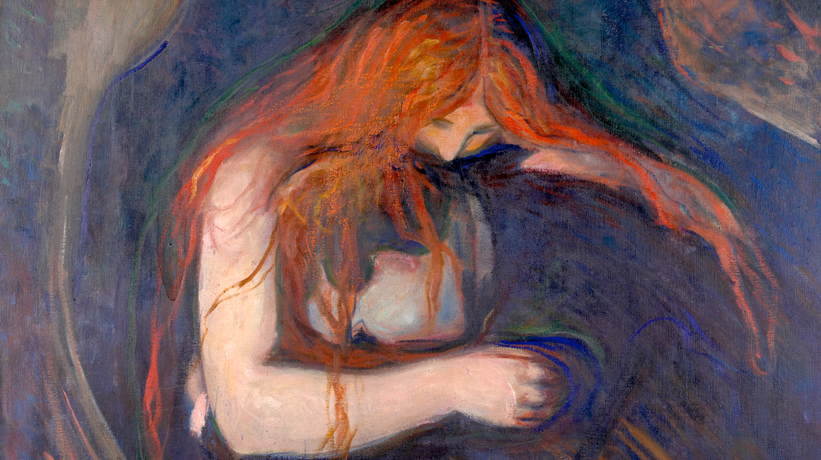
Vampires themselves were targets of ableism long before Count Vlad Dracula III came on the literary scene in 1897. While Dracula is a definitive work of vampire fiction and probably the most famous, it was not the first. That honor goes to “The Vampyre” [sic], a short story by John M. Polidori, published in 1819. Interestingly, “The Vampyre” was written at the behest of Lord Byron for the same “ghost story contest” to which Mary Shelley submitted Frankenstein. “The Vampyre” might not have been the “winner,” but the character archetype caught on fairly fast. Other vampire stories followed throughout the decades of the 19th century, from “penny dreadful” Varney the Vampire to Carmilla, an 1872 novel by Sheridan Le Fanu, and the first with a female vampire as its main character. Despite all the other “monsters” to choose from–everyone from Gaston Leroux’s Phantom to Washington Irving’s Headless Horseman–the Victorian public became increasingly “thirsty” for vampires. To this day, PBS NewsHour describes the vampire as [“the] spooky story staple that just won’t die” (PBS NewsHour October 2023).
The fear connected to vampires hasn’t died, either. Unfortunately, much of that fear was and is connected to real people who had no greater or fewer evil inclinations than average. The people who “inspired” the myths and legends of vampirism were usually victims of chronic, disabling illnesses and the theories undergirding how those illnesses spread. Vampirism was originally thought to spread through “miasma theory,” or the idea that disease emanates from the environment, rather than modern germ theory. For instance, someone could catch the bubonic plague from the “miasma” of an unhygienic environment where the disease was allowed to breed. Someone could contract yellow fever from the “miasma” of a swamp. Someone could even become obese from the odors of certain foods if those odors festered in the environment long enough. It’s a short path to follow, then, that if a confirmed “vampire” spread his or her “vampirism”–the actual communicable or hereditary disease of tuberculosis or porphyria–many others could catch it from miasma, as well.
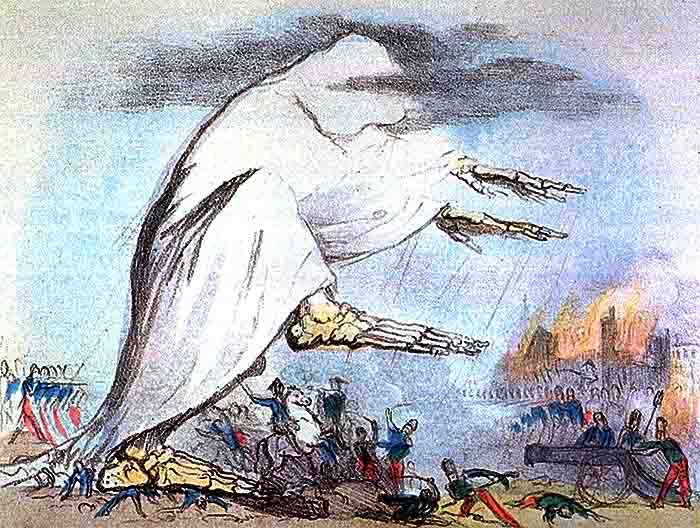
Miasma theory has long since been debunked in favor of modern germ theory. However, the diseases to which vampirism was and is connected, persisted for centuries after Dracula‘s publication. Several of these, such as tuberculosis and rabies, have been curtailed or eradicated thanks to vaccines. That said, they can still be fatal if not caught early enough. In certain countries where diseases like tuberculosis (TB) remain common, patients can still experience degrees of systemic ableism (e.g., difficulty in obtaining treatment, increased stigma, shortened life span when compared to patients with other, similar infections). Victims of TB might still be said to “have the life sucked out of them” by a disease compared to a vampire. However, there is one disease still lurking around the vampire legend even in developed countries, and it is the least understood. It is perhaps the seat of the fear Stoker used to create Count Dracula and thus, to create a novel with ableist undertones.
The Bloody Specter of Porphyria
The disease most commonly connected to vampirism today is porphyria, sometimes rendered “porphyrias.” This is “a group of disorders…that [disrupt] the production of heme and oxygen in the blood,” and are categorized as either “acute” or “cutaneous porphyria (s) or PCT” (Andrews). Acute porphyria affects the nervous system; PCT affects the skin. Some types of porphyria encompass both areas of the body, and many are associated with “chronic [and] potentially life-threatening attacks” (“Behind the Mystery.”) The Mayo Clinic lists a variety of symptoms including chronic muscle and abdominal pain, digestive issues, mental confusion, hallucinations, heart palpitations, breathing problems, and seizures. People experiencing PCT may also develop receding gumlines or facial deformities. In many cases, porphyria causes someone’s urine to turn brown or brick red (Mayo Clinic). Diseases classified as porphyria are usually hereditary; children can inherit genes from one or both parents.

Most if not all “vampirism symptoms” can be traced to porphyria. Vampires’ distaste for sunlight, for instance, comes from the “fragile, papery” skin of people with PCT, as well as the painful blisters and lesions they get if they are overexposed to the sun (Mayo Clinic). The idea that vampires hate garlic stems from porphyria patients avoiding garlic, onions, and similar foods because of high sulfuric content that would aggravate facial and gum deformities or pain. Similarly, the idea of vampires lacking reflections probably comes from the idea that a patient with facial disfigurement might naturally avoid mirrors. The myth of vampires sucking or drinking blood is rooted in the signature porphyria symptom of red or brown urine. Historically, physicians would occasionally recommend porphyria patients imbibe certain animals’ blood to compensate for their lack of heme and associated proteins. This devolved into the rumor that patients killed cattle or sheep to suck their blood, endangering neighbors’ livelihoods. Failing that, rumors claimed, alleged vampires sought human blood, murdering victims to stay alive.

As for Bram Stoker himself, we do not know if porphyria affected him or his family. What we do know is, Stoker “was in a remarkably privileged position” when it came to learning about and understanding disease (Dang 2). He grew up close to his Uncle William, “an eminent Irish physician….[closely involved] with the Dublin Fever Hospital,” as well as brothers, George and Thornley, who were an official theater physician and president of Ireland’s Royal College of Surgeons, respectively (Dang 2). In fact, Thornley Stoker served as president of the Royal College of Surgeons while Stoker was writing Dracula. Bram himself had a chronic disease as a child, and no records indicate an official diagnosis. In particular, there is no evidence that this disease was any kind of porphyria. If anything, it might have been bacterial, given Stoker’s consistent references throughout Dracula to “stagnant and foul” air and water, “the odour of the earth newly turned,” and “air full of specks” (Dang 5). But considering Stoker’s own battle with an unidentified and mysterious, possibly hereditary, disease, plus his character’s fixation on blood, porphyria remains a possibility.
Porphyria or a similar disease as the “inspiration” for Dracula’s character becomes even more a possibility when we consider Bram Stoker grew up in a society wherein fear of disease was completely normal. By the time Stoker began writing Dracula, Ireland and the United Kingdom had survived no less than five cholera pandemics alone (Dang 5). Cholera, a water-borne disease for which treatment existed, but which still wiped out victims on the scale of the bubonic plague, was frightening enough. How much more horrifying and disturbing then, a disease like porphyria, a disease someone like Dracula might carry? As author Julien Draven points out, Dracula’s chronic illness, his “disability,” is a staple of horror precisely because “anyone could have it and spread it…and you wouldn’t know until it was too late” (Draven 8).
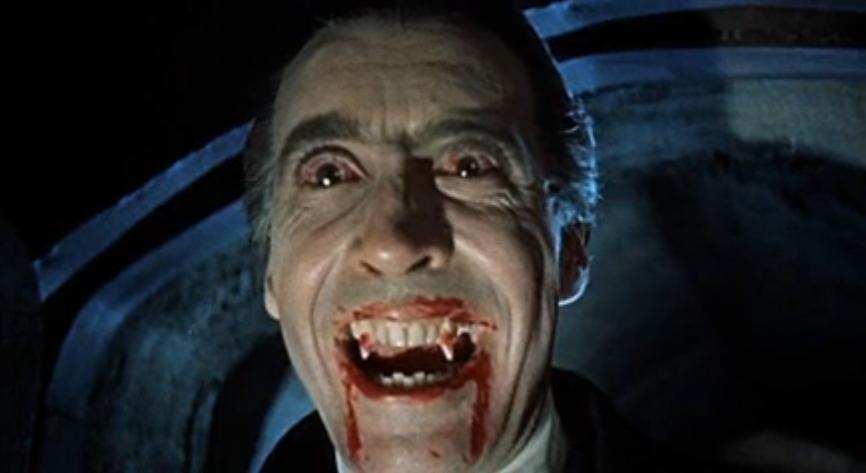
Count Vlad Dracula, then, becomes a “monster” less because he is evil, than because he represents disability or chronic illness as “mutable and environmentally determined” (Draven 7). Disability and disabling experiences are insidious, untraceable, and unpreventable; they are incurable and communicable at any time; they, unlike a “simpler” disease, are sources of ultimate fear. Anyone associated with disability or chronically disabling conditions then, is automatically “foul,” a potential carrier of “air filled with specks,” a bringer of the stagnant miasmatic fog that carries evil and death.
The Facts of Ableism in Vampirism’s Fiction
The ableism behind the myths of vampirism itself then, is insidious enough. As it is, Dracula and other vampire tales have long convinced children, adolescents, and even a number of adults that vampirism is real, depending on the culture and accepted medical protocols of one’s era. Even today, people with one of the many diseases under the porphyria umbrella may struggle to obtain diagnosis, or even be believed when they seek treatment. In some countries, people with tuberculosis are treated as pariahs even after receiving treatment, and those who could have received treatment are sometimes left to die anyway due to stigma.
However, it is not just the medical background of Dracula that gives the novel an ableist edge, or its dubious protagonist an ableist history and motives. The real ableism in Stoker’s novel comes from the portrayal of Dracula himself and how he relates to the characters around him. Notably, his relationships with his victims, and why he needs them in the first place, all drip with ableism. So too, do the way “spared” characters view Dracula, and his ultimate end.
The Macabre Medical History of Dracula and Renfield
Dracula’s disabling chronic illness does not excuse his evil deeds any more than Victor Frankenstein’s Creature can be excused because he was deformed, misunderstood, and abandoned. If anything, Vlad Dracula commits more and greater evil than the Creature, but not because of his chronic condition itself. Dracula commits evil based on how he handles said condition. Whether he is fully aware of this or not, his handling of vampirism perpetuates the fear, loathing, and ableism aimed toward himself.
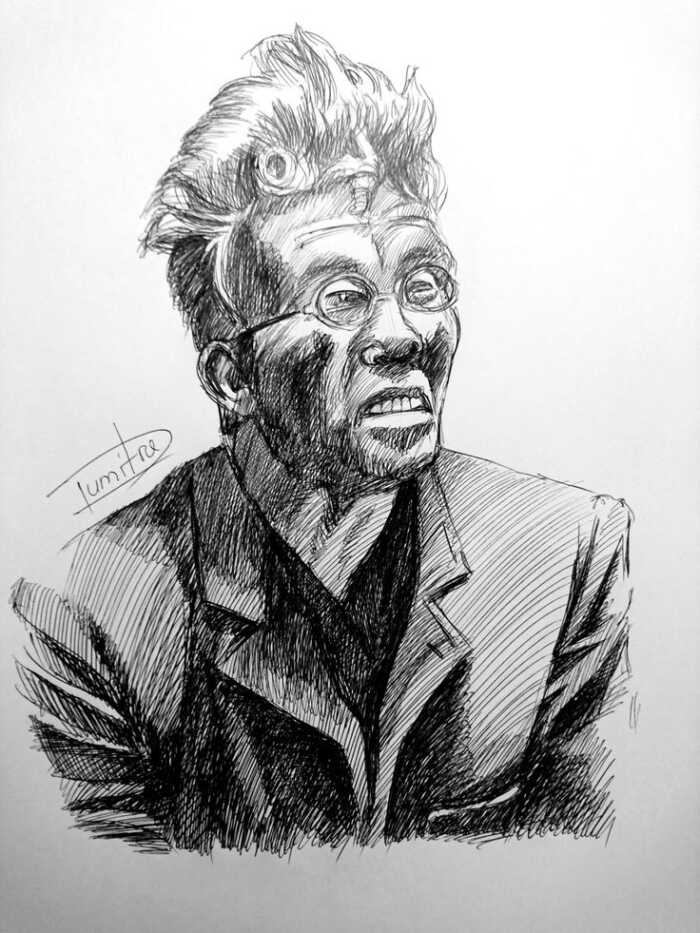
This is apparent with more than one character in Dracula. The first and most egregious though, is Renfield. This man’s first name is never given, nor do we know his history or personality. He is defined as a mental patient, under the care of Dr. John Seward in the asylum where the latter works. This alone makes Renfield an example of ableism, but we can chalk that up to Dracula‘s time period. That is, “mental patient” wouldn’t be a politically or socially incorrect term in 1897. Also, because Renfield’s experiences in the asylum inform the novel so much, it’s acceptable to characterize him primarily as a patient receiving treatment. And while readers should not define Renfield by stereotypically “mental” behaviors, it wouldn’t be out of line for Stoker to do so.
What makes Renfield and his role in the story ableist by today’s standards and in our discussion is the way Vlad Dracula relates to him, and the way other characters respond to Renfield based on that. When Renfield eats live animals like flies and rats, seeking their “life source,” for example, that’s considered “abnormal,” but again, calling it such is not ableist. Renfield’s behavior becomes a tool of ableism when Stoker uses it as a symptom, “a clear pathology of vampire power” (SparkNotes). Stoker drives the point home several times when, during epistolary chapters from Seward’s point of view, the doctor contrasts Renfield’s animal consumption and incoherence with periods of calm and lucidity. Seward takes the lucidity as evidence Renfield is further along the path of “madness” than the doctor believed. He notes Renfield eats the animals to please his “master” Dracula, and thus, becomes more unstable right after taking a “life force.”
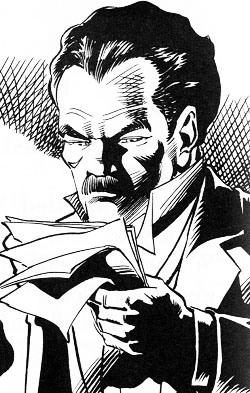
Additionally, Seward takes this as evidence of Dracula’s monstrosity. He notes that unlike Renfield, who is remorseful and “tormented” because of his behavior, Dracula is not. In other words, Dracula is beyond hope, although both Renfield and Dracula are suffering and ill. The implication, then, is that both Seward and Stoker subscribe to a type of “disability hierarchy.” As explained by advocate Kathie Snow, “disability hierarchy” is an unconscious bias in which the less visible and life-altering a disability is, the more “acceptable” it is to the abled majority (“Disability is Natural”). For example, an ambulatory person with monoplegia is more “acceptable” than a blind or deaf person, but that blind or deaf person is more acceptable than someone in a wheelchair. But if that wheelchair-user has no cognitive disabilities, he or she is more acceptable than someone with Down Syndrome or autism with cognitive components.
Similarly, Seward finds Renfield’s consumption of live animals repulsive. But Renfield’s mental illness is nonetheless more acceptable than Dracula’s combined physical and mental affliction. Conversely, both Dracula and Renfield can be lucid. But because Dracula “looks” like a refined gentleman rather than a “typical mental patient,” as it were, his lucidity is presumed real, while Renfield’s is fake. Additionally, Seward is understandably disturbed that Renfield considers Dracula his “master” (SparkNotes). He correctly deduces Dracula must be stopped for this if no other reason. Yet again though, Seward offers more understanding and latitude to Renfield, seemingly based on his unconscious bias.
What Seward fails to take into account is, not how Dracula got hold of Renfield, but why. Had Seward set the “disability hierarchy” aside, even for the briefest moment, he might’ve considered Dracula can only live as long as he has access to specific elements: earth from his native Transylvania, or human blood. The second option is more plentiful and reliable, so Dracula now depends on it as his life source. As for how he obtains that source, his methods are undeniably wicked (e.g., imprisoning Jonathan Harker, draining secondary sources from the vulnerable Renfield, presumably turning over other guests to his three female cohorts). But considering Dracula’s “condition,” the question becomes: Is Dracula’s crime of taking blood and thus eventual murder, any worse than turning innocents like Renfield into victims of ostracism, ableism, and worse before taking their lives?
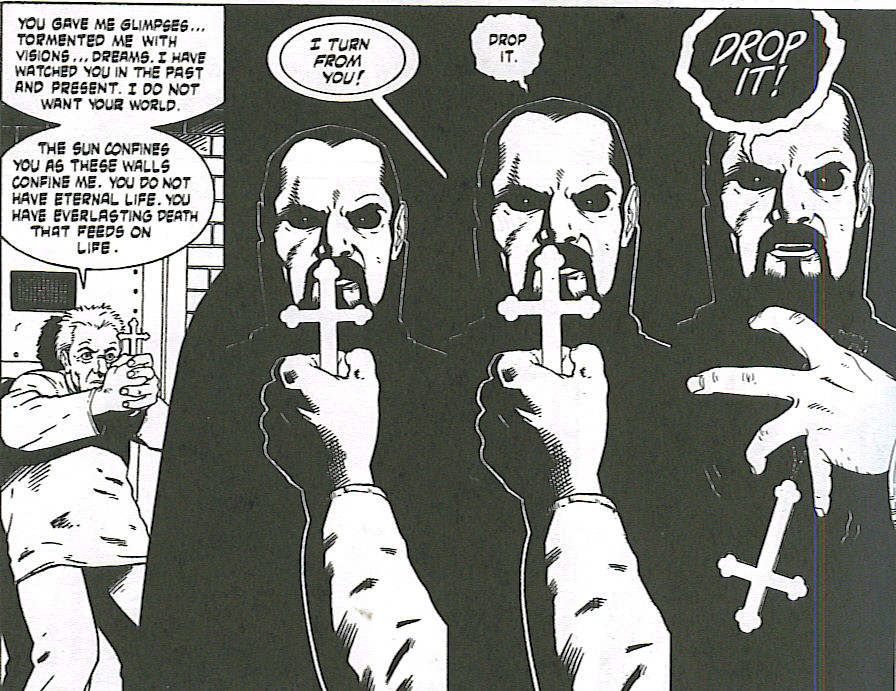
Dr. Seward fails to consider any of this for Renfield or Dracula, who is in the “late stages” of vampirism but for all Seward knows, can still reason and emote as a human (admittedly, more consistently than Renfield can, and Renfield is not a vampire). Thus, in the case of Renfield, neither man receives the chance at rehabilitation he needs and perhaps deserves. Dr. Seward, then, fails to live up to his oath to “first, do no harm,” and his duty of care. That is, Dracula is an abuser and murderer, but that stems from “chronic illness.” Dr. Seward, perhaps the only character with “expertise” in cases like Renfield’s or Dracula’s, is the only one who might’ve brought Dracula’s story to a less frightening, disturbing conclusion than the one we have. The fact that he did not, means Dracula arguably had no choice but to stay entrenched in wickedness and drag innocents down with him.
The Tragic “Liberation” of Lucy Westerna
Stoker and Dracula do not end their story without one more victim. Nor does ableism cease its influence without a final blow, the most crucial and deadly of all. A discussion of Dracula’s ableism–that of character and novel–would not be complete without an analysis of how it applies to Lucy Westerna. Lucy actually succumbs to vampirism first, but she is placed in our discussion intentionally. She is simultaneously the most and least likely of Dracula’s victims, and thus, the one who touches off the other characters’ mission to end the “monster” once and for all. But the double standards and convoluted reasoning attached to Lucy’s vampirism make her the strongest example of ableism in the novel. They also make her the strongest example of why Dracula himself is a victim of ableism.
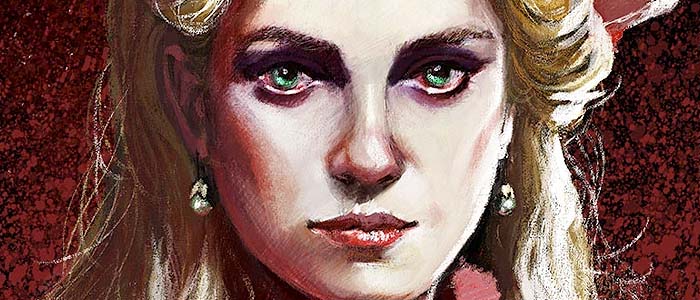
Best friend of deuterotagonist Mina Murray Harker, Lucy is “an attractive, vivacious young woman” (SparkNotes). She is highly sought in English society, such that three men have proposed to her at the novel’s outset. After much deliberation, she has accepted Arthur Holmwood’s proposal, but as she writes to Mina, she would enjoy having all three men if convention would let her. “Why can’t they let a girl marry…as many as will have her, and save all this trouble?” she writes in chapter 5. Today, we might speculate this means Lucy is a girl who “really gets around,” as TV Tropes puts it. But in reality, Lucy is as virtuous as the ideal Victorian woman should be. In addition to her beauty, she is compassionate, good with children, and a stalwart friend to Mina.
All this, Stoker implies, makes Lucy’s encounter with Dracula more tragic than anyone else’s. In other words, when Dracula overpowers Lucy and drains some of her blood, rendering her “among the Un-dead,” it is not just tragic because Lucy is now a diseased vampire, a carrier of incurable, fatal depravity. The “loss” is doubly tragic because Lucy was a woman, and more importantly, an ideal Victorian woman. In losing her, Whitby, England has lost a paragon of beauty and virtue, a true “angel in the house.” Lucy is no longer the angel, no longer the ideal. She is instead a perverse antithesis of everything a Victorian woman “should” be.
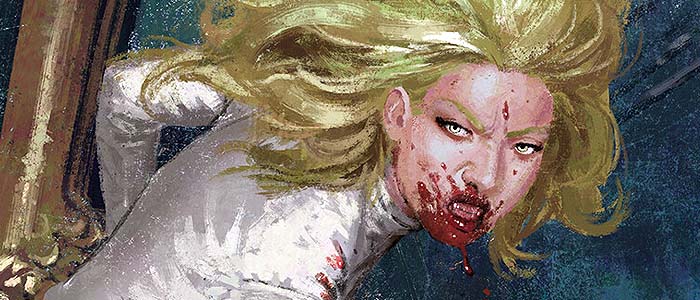
As many scholars from Duy Dang to Gregory Edwards (AKA Sparky Sweets of web video series Thug Notes) explain, vampirism renders Lucy Westerna horrific because now, the “whisper…of sexuality” and recklessness she once suppressed, is fully displayed in her new form (“All Great Notes”). A liberated Lucy, scholars tell us, is a disturbing Lucy, one meant to be saved from herself. When Lucy’s undead state is discovered, the possibility of death hangs over her, because to Victorian society, such a frightening woman is not a “real” woman at all. She is not quite as subhuman as Dracula, though. For that, she would have to be disfigured or disabled, and react to that condition the way Dracula does.
Unfortunately for Lucy, vampirism disables and disfigures her (whereas Dracula is fairly handsome, pallor and moderate hairiness aside). Interestingly, though, Lucy is first described as “disfigured” in a sense of “voluptuous wantonness,” contrasted with her previous “purity,” which analyst Corrine Simpson calls “a direct contrast to what she stood for in life” (Simpson). This description is paired with phrases that highlight the vampire Lucy’s unnaturally red lips and deadened eyes. Stoker goes on to explain that after succumbing to Dracula, Lucy begins feeding on children. In other words, this former “saucy, carefree,” yet virtuous, delicate woman, has become an unattractively curvy, bloody-lipped child murderer with eyes full of “hellfire,” because Dracula chose her as a life source. Lucy is no longer a person, but has fallen victim to the “contagion” of Dracula’s “chronic” condition.
Lucy’s grotesque new form is not the most ableist part of her character or her relationship to Dracula, however. That lies in why Dracula “chose” her to begin with. Readers learn early on, Lucy is a sleepwalker and has frequent episodes. Corrine Simpson theorizes this is one reason Dracula singles her out as a victim; her family lives near Whitby’s harbor, which makes the “sweet, unspoiled, beautiful” Lucy an irresistible target (Simpson). Simpson goes on to note Lucy’s friendship with Mina Murray Harker as a reason Dracula targets her, the implication being he wants two victims for the price of one, so to speak.
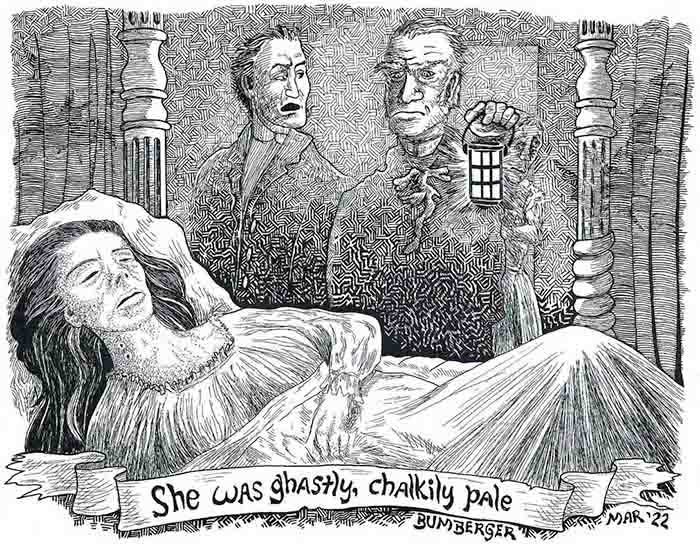
Both theories are probably true. But when one adds Lucy’s sleepwalking to the mix, Lucy’s fate and by extension Mina’s, becomes more sinister. In 2024, sleepwalking isn’t classified as a disability under the Americans with Disabilities Act (ADA), although it can be treated as such if there is a formal diagnosis and no successful treatment. In the Victorian era though, such disorders were curiosities at best. They were often linked to crime or at least the potential for “deviance,” and like many diseases, were “[cultural receptacles] for fear” more than anything else (Wigginton 2014). Lucy and her loved ones would’ve had no way to treat or prevent her sleepwalking episodes, thus, no way to protect her from Dracula. Lucy, who already exhibits “no agency over her own fate,” loses what little she has from minimal contact with the afflicted count (Simpson).
Mina and Jonathan Harker, Dr. Seward, and Van Helsing do try to save her life, which is much more than can be said for Dracula or Renfield. But the tragedy of Lucy Westerna, which began as anti-feminist, gains a layer of ableism when one realizes, a pre-existing, misunderstood disorder was partially responsible for killing Lucy.
Again, we cannot blame Victorian physicians or mental health professionals, such as there were, for not knowing what we know about sleepwalking. We can, however, posit that internalized ableism and self-hatred made Dracula choose another disabled, vulnerable target. We can also wonder why Bram Stoker gave his “monster’s” first victim a pre-existing disabling condition and then gave that victim the story’s most tragic, pitiable death. When one considers Mina Murray Harker, an equally virtuous yet abled woman, and one who lacked Lucy’s “saucy” tendencies, is spared, one wonders if Stoker meant to “punish” Lucy with disability and death.
A Life Unnecessarily Drained Dry?
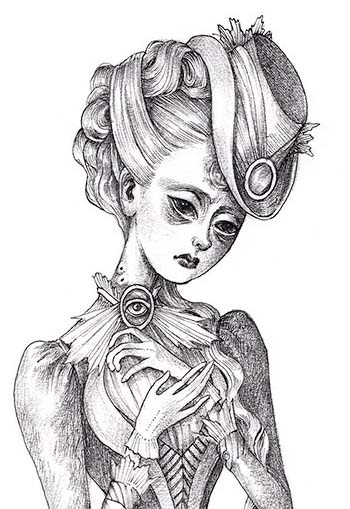
Whether Bram Stoker meant to punish Lucy, Mina, or any other human character, he does punish Dracula in the end. This is a relief, including to the most open-minded, sympathetic reader. After all, to paraphrase a court case of 2019, “[Disability] does not give license…to act with impunity” (Lindley). Disabled by chronic illness or not, Count Vlad Dracula is a multiple murderer. He’s also guilty of false imprisonment, property destruction, and likely other crimes Stoker does not describe. Therefore, when Harker and Van Helsing finally destroy the boxes of earth Dracula brought from Transylvania, leading to his death, it is truly an end to a reign of terror in Whitby. When Mina Harker is saved, snatched from the clutches of vampirism, it is a victory for love, marriage, and happy endings, no matter what implications might exist for modern feminist critics.
Still, the nagging reality is, Dracula’s actual crimes are only part of Stoker’s picture–a picture he may have unconsciously created. That is, Stoker may well have feared and hated disease his entire life. The creation of Dracula reads as an attempt at catharsis, a place where their author could experience a worst-case scenario safely. Bram Stoker does not read as an ableist, anti-feminist, or otherwise bigoted man. If anything, he reads as a man trying to “pull back the curtain” on some physical and societal ills that have gone unchecked for too long.
Stoker’s problem is similar to Mary Shelley’s, in that he does not cleanly separate Dracula the character from the fear, hatred, and prejudice the “monster’s” behavior incites. This works somewhat, as it did with Shelley, in that it makes Dracula a complex, layered character. He, like Frankenstein’s Creature, is certainly more interesting and yes, sympathetic than the other characters we will meet. But this lack of clean separation, coupled with Dracula’s separation from “real humans” and eventual death, further cements horror as a “safe space” for prejudice, particularly ableism. This problem would continue long after Stoker’s death, well into the decades and mediums of contemporary horror.
Ableism Lives On in Contemporary Horror
As “classic” literature, film, and other mediums give way to contemporary stories, some problems with the classics tend to die out. The inevitable march of time, plus advancements in science, technology, medicine, and other films discredit problematic character types, plot lines, and tropes, rendering them “dead horse tropes.” These mainstays of the classics become cliched, and depending on the situation, offensive.

Unfortunately, ableism has not undergone this revolution, at least in horror. The presence of ableism in contemporary horror is somewhat acknowledged. Today’s writers, for instance, are cautioned against using sociopathy, psychosis, or other types of mental illness as the sole or primary motive for evil or horrific behavior. Many of the tropes associated with contemporary, ableist horror, such as the Final Girl in slasher films, are commonly avoided or parodied. And a horror consumer would be hard pressed to find a hero, let alone a villain, in their favorite horror subtype with a common, visible disability like Down Syndrome, cerebral palsy, or multiple sclerosis. Society’s collective conscious harbors a level of awareness that these things simply aren’t done. If they are, it’s tasteless at best and career suicide at worst.
But collective consciousness aside, ableism persists in contemporary horror. In some ways, it’s actually easier to get away with than in the days of Frankenstein’s monster and Dracula. That is, most creators today try to respect the reality and experience of minority characters. Therefore, if they create someone outside their primary experience or demographic, they are usually careful with research, character arcs, and overall portrayal. Yet, disability is the most heterogeneous and fluid minority we have. Anyone can become disabled at any time, and anyone can experience any number or combination of manifestations. Some disabilities are immediately visible, but many are not; in fact, disability is so dynamic, its visibility can change based on situation.
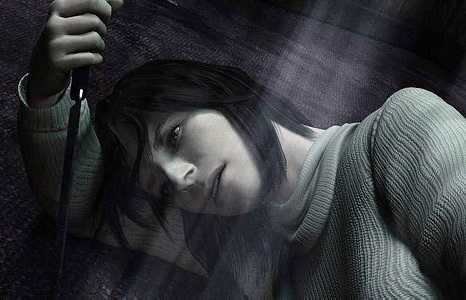
Thus, a creator can easily present an ableist character, intentionally or not, and explain, “They’re not meant that way” if called out. Some, hopefully most, creators are sincere in this statement, but others simply use it as a cover. Those creators usually go on to complain about how disabled people “want special treatment,” “want everything to be about them,” or should not expect equal treatment if they are going to protest their fictional portrayals. Alternatively, the creators may not hold such sentiments, but social media backlash will prove sponsors and consumers do.
As with authors of classic horror novels, our discussion does not exist to judge creators of contemporary horror. Unlike with classic authors, we can certainly say they knew better, or should have. When it comes to contemporary horror though, we will analyze ableism in terms of how it echoes classic examples–in other words, how it “feeds” outdated, yet prevalent expectations of disability. We will also examine where and why ableism persists in contemporary horror stories, why consumers might not object to it, and if they realistically should.
“Slashing Through” Ableism in Slasher Films
As we move from literature to film in our quest to exhume and excise ableism, we should begin with sharp indictments toward some “classic” slasher films. Slasher films were not the first horror tales to grace the silver screen. That honor belongs to such films as The Terror, the first horror film with sound, produced in 1928, or the cadre of films like Son of Frankenstein, I Was a Teenage Frankenstein, Son of Dracula, and The Wolf Man produced in the 1940s and ’50s. These, of course, hearkened back to horror’s existent ableist roots, ensuring the “monsters” of yesteryear would persist for many more generations. And even the genre’s biggest neophytes know mainstays like Rosemary’s Baby and The Exorcist, both of which perpetuate stigma surrounding mental illness and disabilities. Slasher films, though, are the contemporary films that deal most directly with disability, thus ableism. They are also the films that “feed” both classic ableism and more recent examples we will examine shortly.
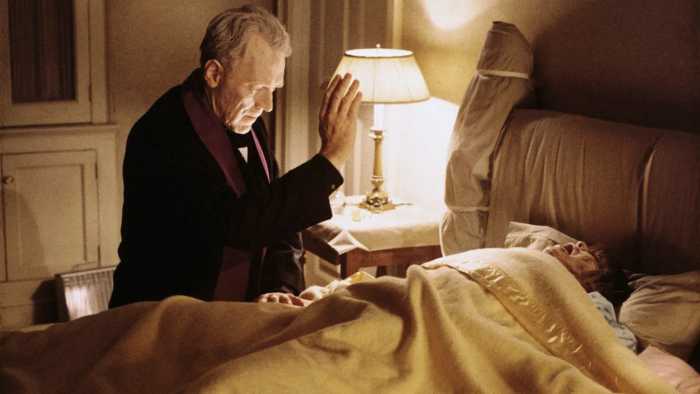
A typical slasher film revolves around “a killer, or group of killers, stalking and murdering a group of people, usually with bladed or sharp tools.” Not every slasher film is ableist; many of them don’t have characters who are disabled or coded as such. However, the premise of a slasher film, like a “monster” film or novel, leaves plenty of room for ableism to exist. That is, in most slasher films, the killer or killers act based on past trauma, “wrongful action,” or the anniversary of such, which motivates or re-inspires said killer (s). The killer (s) use murder as a form of outlet or catharsis, sometimes recreation (or re-creation of the trauma as they wish it had happened), or a path to sexual pleasure. This alone trivializes trauma and Post-Traumatic Stress Disorder (PTSD). It also reinforces the stereotype that all murderers are mentally ill and vice versa, and reinforces the stigma that has surrounded mental illness and disability since the days of Shelley and Stoker. Additionally, common slasher motives introduce the stereotype that mentally ill/disabled persons are sexual deviants.
Perhaps the slasher films most guilty of perpetuating these “portraits” of real-life killers come from the “Golden Age” of the subgenre, the 1970s and ’80s. These are the films the most recent generations–Generation X, Millennials, and Generation Z–grew up on, were first introduced to, or are introducing to their kids. Because these films first existed when film and television were ubiquitous, they have a sense of immediacy their film predecessors and certainly literary ones lacked. As Gareth Grumbles of the Headcheese blog on Medium writes, they carry the pleasantly chilling sense, “This could happen to me!” But while a swath of recent generations like a good, realistic scare–once that scare is age-appropriate–not everyone appreciates the scare coming from a killer who carries the echoes of ableism with his blade.
The Texas Chainsaw Massacre
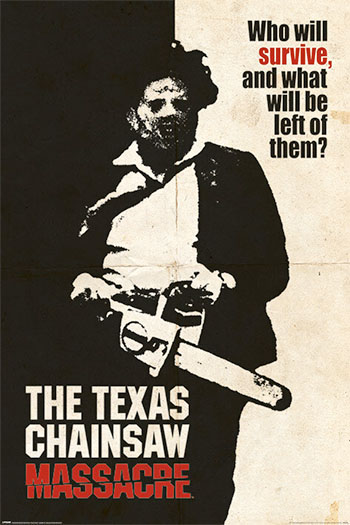
First released in 1974, The Texas Chainsaw Massacre (TCM) is a key touchstone slasher. Produced and directed by Tobe Hooper and starring Marilyn Burns, Paul A. Partain, Edwin Neal, and Gunnar Hansen as Leatherface, the film was independent and made cheaply for its day, costing less than $140,000 in 1974 money. Critics were ambivalent, but its over $30 million returns at the box office upon its October 11 release proved viewers loved the film, small budget, unknown actors, or not. The film earned an R rating from the MPAA, despite Hooper’s desire to be “restrained [with the] gore.” Due to its violence, it was initially banned in several countries including Brazil, China, Australia, and all of Scandinavia. The goriest part of the film though, lies not in its blood and body count, but Leatherface himself.
Unmasking Leatherface’s “Real Face”
Leatherface’s real name is unknown; at least one actor has stated there is “no real mythology” for him. He appears as an average man with a dubious, later disturbing, connection to animal slaughter that morphs into serial murder. Thus, Leatherface is already more “realistic” than Frankenstein’s Creature or Vlad Dracula. It might be hard to prove Leatherface is disabled or coded in any way, because his actual “impairment” is unknown and never discussed. Also, unlike the Creature and Dracula, Leatherface doesn’t act alone. His entire family is evil and abled, and Leatherface’s evil is tied directly to their existence (contrast Victor Frankenstein, who is often blamed for the Creature’s existence but simultaneously written as his victim). If anything, the previous generations, Grandfather and Leatherface’s Old Man, are presented as much more irredeemable than their progeny.

The “family affair” nature of TCM, and the lack of a name for Leatherface’s disability, might mitigate its ableism, except for a few key facts. The first and most disturbing is, Leatherface’s “impairment” is his entire personality and motivation wrapped into one package. As Gareth Grumbles explains, the film’s “lean” runtime of 80 minutes coupled with its lean budget, doesn’t allow much character development for any of the cast. However, the conventions of the era–“cardboard” victims who do little except mill around waiting to be picked off, background characters who exist to fill space–mean Leatherface needs the bulk of the screentime and narrative arc to make his villainy believable.
But outside his killings, Leatherface doesn’t have a narrative in the original film. The most viewers know about him is, he wears a mask and speaks in “incomprehensible gibberish,” if at all. He was purposely created as “a menacing figure with childlike behavior.” Viewers can say only three things about Leatherface for sure: he’s big and scary, he’s probably hideous under the mask (because why else wear one), and he acts like a mentally disabled person. He is a particular example of what cognitive or mental disability was understood to look like circa 1974. His almost total lack of speech, gibberish, screams, and grunting eerily echo some of the vocalizations seen in documentaries focused on cognitively disabled, institutionalized children of the era.
In fact, Gunnar Hansen’s original attempt to speak Leatherface’s “dinner scene” dialogue was shot down. Tobe Hooper called Hansen’s portrayal “too rational.” He, co-creator Kim Henkel, and Gunnar Hansen went on to refine Leatherface’s character so he became the directors’ “vision of a mentally disabled maniac.” This portrayal in mind, most of Leatherface’s actions get tainted with an ableist lens, whether or not he’s actively killing. His infamous ending “Chainsaw Dance,” for instance, becomes terrifying, threatening–and perhaps a macabre nod to a cognitively disabled, possibly autistic, person stimming or acting out during a meltdown.

Remakes of Texas Chainsaw Massacre, sequels, and tie-in literature like comic books have tried giving Leatherface a “mythology” or backstory that might explain or erase the original’s ableism. However, these attempts often worsen the ableism. For example, the more modern Leatherface is sometimes presented as a child abuse victim, beaten and tortured by the Old Man from early childhood. In many versions, this torture included his face being skinned off, hence, the mask. Yet, said mask is still made from human skin, which keeps its gruesome “horror factor” intact, but underscores TCM’s focus on “body horror,” which can and often does include disability.
As Movie Jam writer Billie Anderson explains, “body horror” is a staple trope of the horror genre. It doesn’t have to be ableist, because every human has a body, and it is scary when that body doesn’t work “normally,” even if the changes are expected. Something as innocuous as a painful growth spurt or as joyous as pregnancy can be “body horror,” because both situations are painful and inescapable. Pregnancy is often quite bloody and, while death by childbirth is much less common in developed nations than it once was, it is still a possibility.
Anderson goes on to caution though, that horror often presents “having a body that doesn’t behave as it is meant to” is “the scariest thing of all.” Ergo, “the scariest thing of all” is having some kind of disability. Anderson uses Leatherface’s disfigurement as one example among many. The creative minds behind TCM, Anderson implies, aren’t content to let Leatherface be scary because he’s a tall, big-boned, “body-builder type” man, which would be scary to many people, particularly the young teens Leatherface traditionally targets. The creators aren’t content to let Leatherface be scary because he’s a cannibal from a whole family of them–read: someone who has grown up with cannibalism as “normal behavior” and still lives in an encouraging environment, effectively sealing his victims’ fate once they enter his property. No, Anderson implies, Leatherface “needs” a disability or disfigurement to justify his killing spree.
Genuine Sympathy or Cold Comfort?

Of course, Leatherface is not the first horror villain whose disability “justifies” his actions. Frankenstein’s Creature and Vlad Dracula can incite sympathy too, maybe empathy. Be careful though, not to equate Leatherface’s actions or motivations with those of our two previous villains. Significant differences exist, and these are the second key to TCM’s overall ableism, as well as why this film’s ableism might be “worse” or less excusable than “classic” examples.
As Billie Anderson infers and much analysis of the original film, including Wikipedia, tells us, Leatherface was originally portrayed “with some sympathy to him.” Many fans still find him sympathetic today, owing to both the original film and modern portrayals. In the original film, for instance, we briefly see Leatherface crying with his head in his hands after he murders protagonist and victim Jerry. He’s also usually childlike around his victims, at least upon first meeting. During the dinner scene, the Old Man, AKA Drayton, soothes his son, “It’s okay, it’s okay” when the latter starts to act upset, as one would a small, dysregulated child. More recent portrayals often show Leatherface as either an anti-villain who actively fears his family, or an arguably innocent villain who kills because he genuinely doesn’t understand interaction or social skills outside his family or what he’s told to do. TV Tropes goes so far as to call one version of him a “[Broken] Cutie,” referring to the 2017 film and character study Leatherface, wherein the title character was tortured, traumatized, and institutionalized as a little boy.
To be fair, the Leatherface of 2017’s film comes closest to being a real anti-villain, a la some interpretations of Dracula and the Creature. In this incarnation, he’s more the Dumb Muscle and a put-upon Brute than anything, according to TV Tropes, which would make him almost completely innocent if only by reason of insanity. The problem with this and other such portrayals of Leatherface, and why they’re still ableist, is they don’t know where to stop the character’s tragic backstory. Watching 2017’s Leatherface devolve, viewers get the sense the creators can’t stop. They pile on the trauma, from Leatherface having a real name (Jedidiah Sawyer) that then gets stripped away, to being taken hostage by two fellow, violent institution inmates, to watching a friend get shot and killed by police. To top it off, Leatherface’s mother eventually forces him to kill another friend, beating him into submission. Finally, just for the heck of it, 2017’s Leatherface is portrayed as obese rather than a “body-builder type” arguably to make him more pathetic.
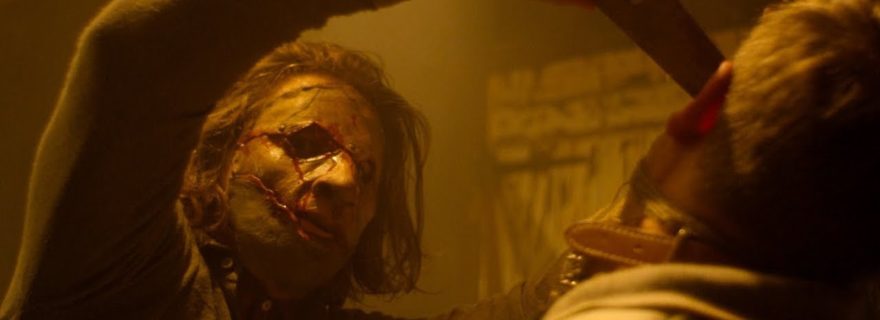
None of these examples make Leatherface any more sympathetic than he would have been if written as a completely abled and average, if cannibalistic, killer. In the case of the original film, the moments meant as sympathetic come off as melodramatic or forced, and the short runtime ensures they aren’t enough to round out Leatherface in any sense. If anything, these short moments reinforce Leatherface’s disturbing mix of childlike and psychotic, and perpetuate the era’s stigma of all cognitively disabled people as childlike, scary, and deviant.
Unlike Dracula or Frankenstein’s Creature, Leatherface doesn’t have skills or experiences with which to contrast unbridled evil. Nor does he have an actual illness or named disorder which, if treated humanely, could result in the manifestation of a well-adjusted person. He is also not “victimized” as our previous two examples were, even if Leatherface has less understanding of his deeds than did the previous men. Leatherface is “handwaved” as a product of his family who is neither able nor willing to be different. He is both a cannibal and mentally deficient, the first of which might be forgivable based on his family history, but the second of which, the film implies, somehow is not. Leatherface does not get sympathy then, because he’s not allowed to “earn” it.
In cases like 2017’s Leatherface, the attempts at sympathy or empathy are themselves are pathetic and rather sickening. They are not genuine character development, but an endless Trauma Conga Line piled on to feed the creators’, and some viewers’ appetite for the gory and disturbing. Once again, in fairness, Leatherface’s 2017 portrayer Sam Strike did aim for a “two-sided,” more “character-driven” version of the villain. He stated his goal in making Leatherface his own was to show how [“becoming a killer] could happen to anybody.” Indeed, the film’s focus on Leatherface’s childhood, particularly his relationship with a disturbed mother, accomplishes this. Unfortunately, Strike otherwise focused on the physical aspects of Leatherface, such as his “battle cry whenever he lost his temper,” and his physical weight and stature.
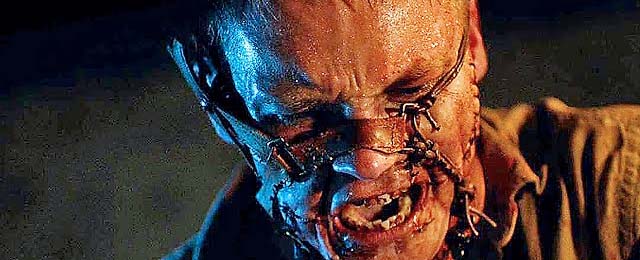
Such focus makes Leatherface less of a person and more of a horror caricature–the same kind of caricature that communicates, “disability is scary” and “disability makes you evil.” The parts of Leatherface’s story that would frighten or disgust anyone, from slaughterhouse-inspired killings to human skin accessories, are eclipsed with the same idea that, while evil exists, only disability creates true horror and danger. Worse, contemporary viewers and horror fans who might not see TCM as a touchstone or favorite, still accept this ableist portrait because it gives them what they wanted for centuries and still want today.
That is, for some viewers, horror is about blood, gore, and the chilling realism of what can happen when we cross the “wrong” people. TCM and Leatherface offer plenty of that. Unfortunately, the continuing idea that disabled people are those “wrong” people, is not an idea many viewers are keen to consider compared to murder, grave robbing, and dismemberment. As for viewers who are more philosophical or question the portrayal of Leatherface, they are commonly shot down. That’s often because they themselves are disabled (in an example of yet another trope, The Complainer is Always Wrong).
Villainizing and Victimizing Disabled Characters
Finally, Texas Chainsaw Massacre’s ableism is egregious because this film paints disabled people as both villains and victims. This film is not the first horror piece to do so. Recall, the same thing happens in Dracula with Lucy Westerna, who is both an untreated sleepwalker and a formerly “pure, perfect” victim of vampirism. However, TCM and director Tobe Hooper’s version of a disabled victim is worse than Lucy Westerna. Lucy was a disabled victim, yes, but also a close friend to Mina Murray Harker, indicating she could act with some agency and maintain inter-abled relationships. She was a vivacious woman who enjoyed the pursuit and company of men, indicating she and other disabled people could experience sensual and sexual attractions and activity. Franklin Hardesty, by contrast, is a disabled victim–and that’s it.

Franklin Hardesty, victim and Final Girl Sally Hardesty’s younger brother, is still commonly called “wheelchair-bound” in most tie-in literature. Conventions of the 1970s aside, this gives the character an ableist lens. It encourages viewers to see him as “bound to” or “trapped in” a chair, rather than viewing the chair as a mobility device that provides freedom. Then again, Leatherface needs trapped victims, so the viewer could say the wheelchair becomes evil in itself. Leatherface doesn’t pick Franklin out as a particular target. Yet when he lands a killing blow to Franklin’s stomach, viewers are meant to pity the young teen perhaps more than the other victims. The others at least had a chance to escape, it’s implied. Franklin, the “wheelchair-bound” paraplegic, was doomed from the start. If anything, his death echoes the idea, in any life or death situation, survival instinct means “the disabled,” of any description, are usually first to go. Even if a disabled person is not the first victim, he or she isn’t given much if any agency, any viable escape route, or any voice in a plan made to outwit the killer(s).
However, it is not just Franklin’s status as a murder victim or paraplegic that makes his portrayal ableist. It’s more his status as what TV Tropes calls a “Butt-Monkey,” or a character who is so hapless, they “[seem] to walk through life with a ‘Kick Me’ sign taped to their back.” They are “always the butt of the demeaning joke”; they are “put through hell” simply for the sake of watching a character survive such, or for comic relief.
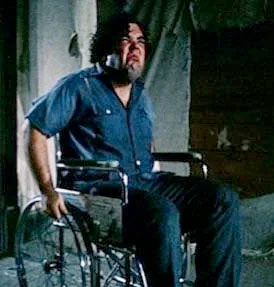
In Franklin Hardesty’s case, he is the Butt-Monkey not because he’s disabled and hapless or disabled and inherently funny, but just because he is disabled. For example, his family and siblings seem to think it’s normal, and funny, for him to get stuck trying to navigate his own house. His peers and so-called friends tease him about being first to die at the hands of the hitchhiker, who they erroneously believe is the threat to their town. Later on, Franklin rolls backward down a hill while trying to relieve himself in a moment played for laughs. He becomes the only victim Leatherface actually kills with his chainsaw, “sliced and diced…in his chair.”
Depending on who you ask, Franklin’s victimhood is somewhat mitigated because he’s not a disabled “angel.” He is far from innocent or naive, and when he dies, no one laments he was “Too Good for this Sinful Earth.” Franklin often acts like “a prick” to everyone except Sally. But instead of using this trait for genuine humor or to break a stereotype of disabled persons, TCM and Tobe Hooper use it to emphasize how annoying and useless Franklin is. Coupled with the fact that his wheelchair makes him almost literal dead weight, Franklin’s death is meant to be read as a relief for the viewers and the rest of his peer group. It’s hard not to “hear” a negative statement about real disabled people in such a portrayal. Namely, they may not be murderers, but neither are they useful or fully realized people. Even if such a statement was never intended, the combination of Leatherface and Franklin means the implication still exists. Horror, then, “slashes” through another story, and ableism claims more victims.
Jason Voorhees, Friday the 13th
Six years after Texas Chainsaw Massacre, the Golden Age of slasher films produced another “gem,” Friday the 13th. This film’s budget of $550,000 outstripped Texas Chainsaw Massacre’s, and its box office returns of $59.8 million worldwide made it the first true horror blockbuster of the 1980s. Considering Friday the 13th was released in May rather than a traditional “horror” or “Halloween flick” month like October or November, this was no small feat. So too, such accolades from viewers were unexpected considering the initial mixed critical response. As with Texas Chainsaw Massacre, Friday the 13th was initially decried and shunned because of violence and gore. Like its predecessor, the original Friday the 13th has also been banned, or its footage heavily cut, outside the U.S.
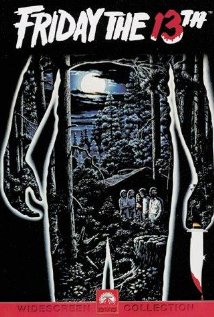
Despite such controversy, Friday the 13th has far outstripped Texas Chainsaw Massacre and many other slasher films in popularity, as well. It boasts no less than ten sequel films, one novelization, Crystal Lake novels aimed at young readers, a developing Crystal Lake Peacock prequel series, and a video game. Friday the 13th is also the originator of the hockey mask as a horror trope or horror prop; though sometimes associated with chainsaws, it was Jason Voorhees, not Leatherface, who wore a hockey mask when pursuing and killing victims.
Some film critics call Friday the 13th the “originator” of slasher films, despite the earlier releases of Texas Chainsaw Massacre and a few other genre entries. While actual dates might be debatable, those critics are right in asserting Friday the 13th “instigated a rush of films…in which young people away from supervision are stalked and murdered by a masked villain.” Indeed, that formula is so popular, it’s been used as the conceit on seasonal competitions like Halloween Baking Championship. This writer once played the Final Girl when her summer camp chose it as their “spoof” drama project. Whatever else it originated, though, Friday the 13th and its “villain protagonist” Jason Voorhees were not the first ableist horror film slashers. Instead, they have kept it alive and discouragingly well.
Different, Yet Exactly the Same
At face value, Jason Voorhees seems similar to Leatherface, and it’s not just the mask. Like Leatherface, Jason is mostly silent in his first film and completely so in the sequels, wherein he is an adult. (He is often called “non-verbal,” but much of the disability community finds this term offensive because it implies complete inability to communicate and the lack of intelligence or desire to do so). Also like Leatherface and most other slashers, Jason does his killing via sharp, bladed tools, although he uses a machete, not a chainsaw. Most importantly, both Leatherface and Jason have cognitive/mental disabilities, which may or may not be connected to their lack of speech (the Friday film franchise doesn’t clarify).
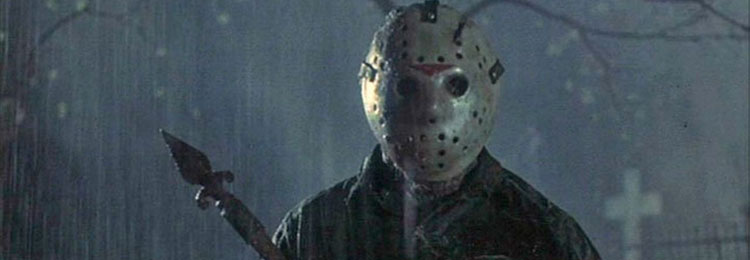
Jason Voorhees differs from Leatherface in some crucial regards, though. His disability is named and somewhat explained, at least in the first film. He has hydrocephaly (AKA hydrocephalus), a neurological condition in which someone has too much cerebrospinal fluid (CSF) in the brain. This disorder can be congenital or acquired; Jason’s is assumed congenital. Jason has a “large, disfigured head” and a “terribly disfigured face” as a result of his condition. He also has “diagnosed mental disabilities,” although no one has ever enumerated or explained what those are. Notably, his mother Pamela treats him as childlike, and he often comes across as such.
Yet, Screen Rant writer Jessica Andrews describes Jason as “exceptionally intelligent despite mental disabilities,” calling him “creative” and “[strategic”] in laying traps for victims and arranging bodies. This indicates Jason’s disabilities are not necessarily cognitive. In other words, he is impaired psychologically and emotionally, but may not have difficulty processing information or using adaptive behavior, as would an intellectually or developmentally disabled person.
Jason’s story, therefore his “journey” to mass murder, is not a “family affair” as was Leatherface’s. He does not fear his family, at least what we know of them. In fact, he has a close, loving relationship with his mother. This gives Jason a unique background and an apparent advantage over Leatherface. Jason has grown up in a “normal” family and is a fairly well-adjusted boy, if one needing support, when viewers first meet him. But as with many elements of horror, Jason’s “happier” beginning exists only at surface level. As the movie progresses, viewers see that while Jason’s origins and reasons for mass murder are different, his trajectory is eerily and discouragingly the same as they’ve encountered before.
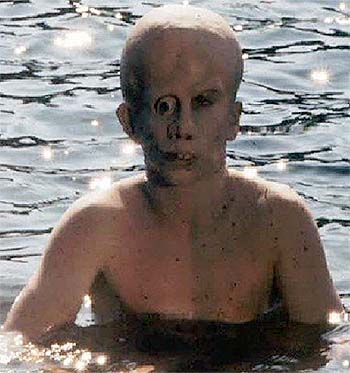
Although set in 1980, Jason’s origin story is hauntingly familiar to most viewers, particularly those who follow disability-centric news stories. Upon arrival at Camp Crystal Lake in summer 1957, young teen Jason is mercilessly bullied for his deformities, lack of speech, and mental disabilities. He flees from the bullies late one night, is forced into the lake despite terror of the water, and is drowned there. From that point, Jason’s ghost is said to haunt the camp, the lake in particular.
Interestingly though, Jason is not the featured villain in the original Friday the 13th. That role goes to Pamela Voorhees, the grieving, avenging mother who goes on a Camp Crystal Lake killing spree 22 years after the fact, following a solitary celebration of what should’ve been her son’s birthday on Friday the 13th. Pamela herself kills most of the victims, teenage counselors whom she blames for not watching Jason closely enough. But it is Jason, the decomposing and disabled “villain protagonist,” who makes the last contact with lone survivor Alice. It is Jason whom Alice latches onto as the villain who holds the “curse” of Crystal Lake.
“Then he’s still there,” Alice murmurs while recuperating in the hospital. That last line seals her fate, Jason’s, and the franchise’s. Alice will survive, at least until the sequel. Jason and the franchise though, will be built around a true-to-life, yet cliched and disheartening narrative. Yet another disabled person, cruelly attacked and victimized, will not receive real help and the chance to express agency and growth in the face of bullying. Instead, because that person is disabled, he will become a villain, at best pitiable, at worst, a cold-blooded, hell-bound monster.
Mommy’s Little Murderer
As with our other “villain protagonists,” the ableism of Friday the 13th and Jason Voorhees goes far beyond Jason’s disability itself or his origin story. So too, does the answer to why the Friday franchise endures as a slasher touchstone. With Jason and Friday, if we want the real answers to these questions, we must plumb the depths of the franchise’s murky “lake,” starting with the real villain of the first film and how she is tied to ableism.
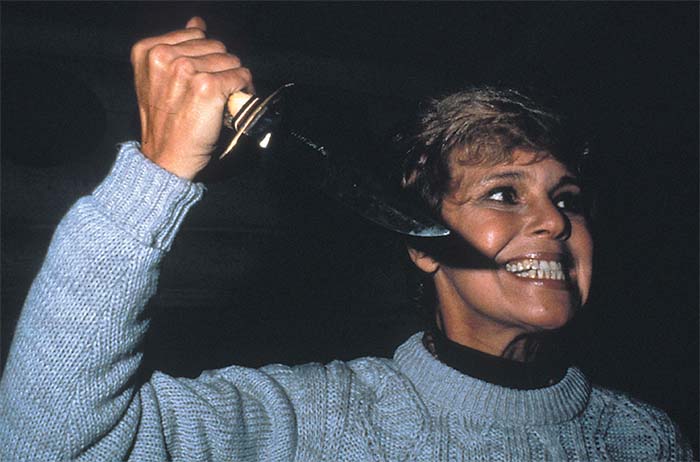
Pamela is a fictional character, and she is a terrible example of a parent to any child no matter their ability level. But she is a reprehensible example of a “special needs parent” or “warrior parent.” The latter moniker is usually applied to parents with autistic children, but it can be applied to parents of kids with other disabilities. (It also applies here since Jason can be read as autistic).
There is no real definition for a “[disability] warrior parent.” In a nutshell though, these parents, particularly moms, build their entire lives around their disabled children. Some pursue cures and therapies at the expense of their kids’ childhoods and well-being, or claim having disabled children ruined their lives. Others, like Pamela, smother and coddle their children to the point of dangerous co-dependency. A warrior mom assumes and often voices, her child can’t function without her, and no one except her understands or loves the child. These moms are often “Mama Bears” who will do anything within their power to protect their kids, even if “protection” means emotional stunting.
In Pamela’s case, her “warrior” attitude contributed to emotional difficulties Jason probably already dealt with. He clings to her because he has no access to anyone else, but also because she insists she is his only safety net. As Jason drowns, we hear him crying, “Mommy! Help, Mommy!” in a choked, innocent voice. “I am, Jason. I am,” Pamela whispers back in faux soothing tones before revealing the truth near the end of the first film. The dark implications are clear. “Mommy” and Jason are a unit. They can only get help from each other, and those who try to part them will pay. The relationship is so intertwined, if one “half” of the unit loses the other, the remaining “half” will go quite literally insane with grief and anger.
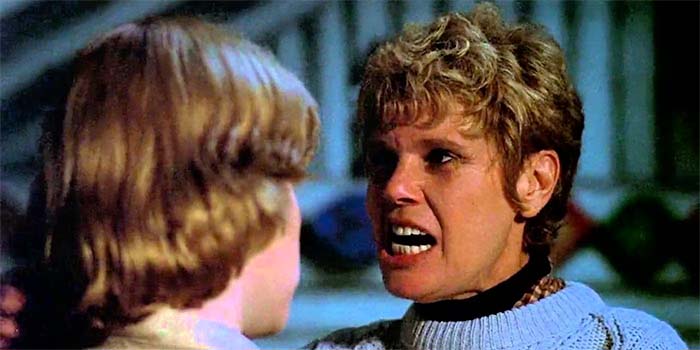
Pamela proves this in her last sane moments, as she turns on counselor Alice and exclaims, “My only child! Look what you did to him!” She is unconscious of the fact Alice was not at Crystal Lake when Jason drowned. Pamela’s mind is so clouded she can’t see humans in front of her anymore. In fact, she can’t see Jason as a fully realized person, and arguably never could. Like some “warrior parents,” Pamela does not see her child beyond his “special needs” or his need for Mommy to “be his voice.” She sees Jason more as a damaged, fragile entity who cannot understand the world around him. For Pamela, everything and everyone is a threat to her and Jason.
Although Pamela dies, her ableist treatment of Jason lives on. At the end of the original Friday the 13th, it’s revealed Jason Voorhees didn’t drown. Instead, he survived and has hidden in the Crystal Lake woods for years. He knows his mother is gone. He also knows the same people, the same threats, who let him be bullied and almost murdered, took her. Out of the grief and anger that made “Mommy” unable to function without him, and a desire to “make Mommy proud,” Jason becomes a murderer and the franchise’s main villain from Friday’s second film onward.
A bit like Frankenstein’s Creature, Jason becomes an abandoned, neglected “special needs child” with no access to his parent and “creator.” Viewers are left with the impression that Jason never had a chance. He might’ve been too disabled to function without his mom, and for whatever reason, never given any means to escape her smothering. Alternatively, he was cognitively sound, but after absorbing his mother’s message that murder is an acceptable outlet, saw villainy as cathartic. Either character arc reads ableist, because they communicate disabled people can’t function independently, nor can they make healthy psychological choices. These arcs also read ableist in terms of Pamela, because they communicate disabled children’s parents are more likely than usual to take her path if pushed too far.
Undead and Yes, Still Ableist
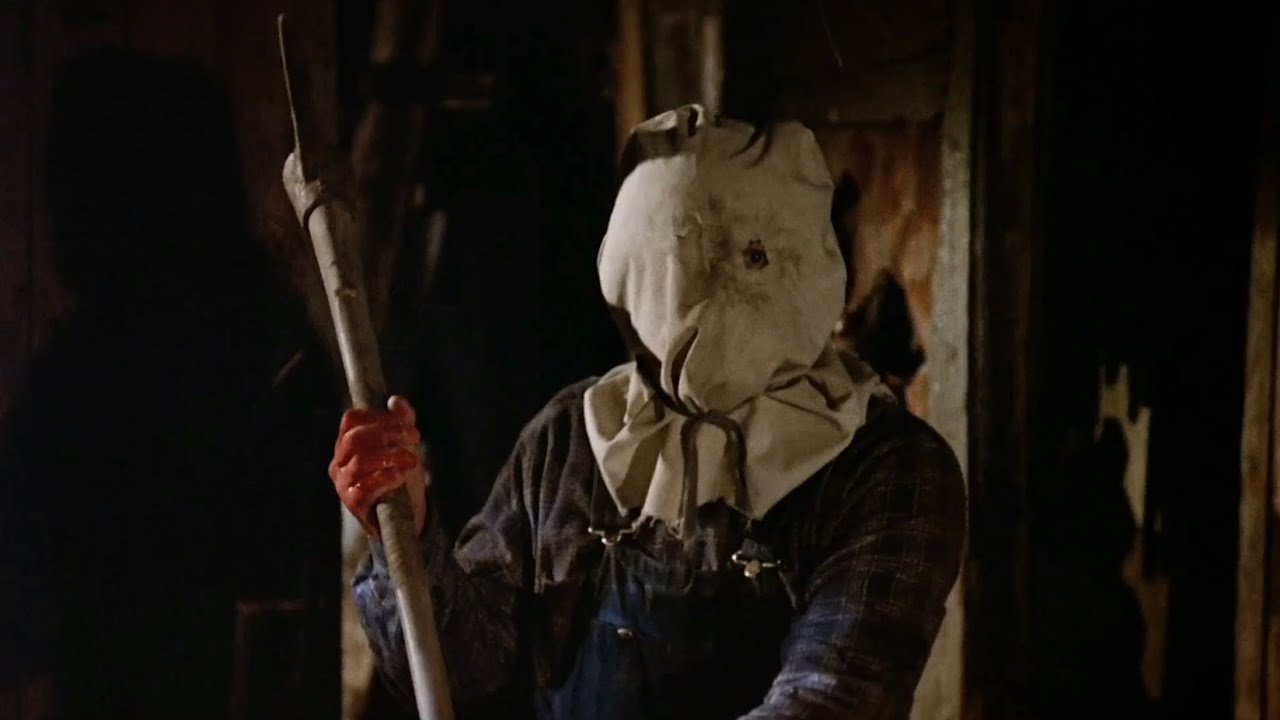
Beginning in Friday the 13th, Part 2, Jason’s character arc and journey change. Bereft of his mother, he now focuses on avenging her death and protecting Crystal Lake from anyone who dares enter “his wilderness.” To reflect this, Jason’s appearance and behavior also changes. From Part 2 through the remaining films, most of his screentime shows him becoming more zombie-like. He is never outright called a zombie, but is understood to be undead. Much of the “scare factor” surrounding the rest of the Friday franchise is, Jason Voorhees is not a horror villain who can’t die, like so many before him. He is a horror villain who won’t die, no matter how many times he’s defeated. Freddy Kreuger, of all people, laments this in the crossover film Freddy vs. Jason, even though he does defeat the zombified camper temporarily.
The more Jason morphs, the less he looks and acts like a victimized, disabled boy. It might seem, then, that Friday the 13th successfully “killed” the ableist implications attached to its focal character. After all, ableism is discrimination aimed at humans or human stand-ins. In cases like Frankenstein’s Creature or Dracula, maybe even Leatherface, it’s aimed at those who show humanity despite a grotesque form, or potential for healthy behavior if a “condition” is treated. Jason might have had these qualities at one time. Viewers presume he was the innocent victim of camp bullies, negligent counselors, and a troubled mother. But Jason was never shown as innocent except in Pamela’s brief flashback. Any significant screentime shows us a raging, vengeful maniac who, lest we forget, is now inhuman. So is it fair to say he is still an ableist representation of hydrocephaly, neurodivergence, or any other disability?
A careful analysis of Jason’s trajectory through the Friday franchise, plus tie-in materials, indicates “yes,” for several reasons. The simplest reason is, if a reanimated cadaver–also undead–and a vampire can have ableist trajectories, so can a resurrected, zombie-esque murder victim. No human or humanoid is exempt here. More to the point though, Jason’s actions reveal his creators, and the directors of his franchise, didn’t take respect for real disabled people into account.
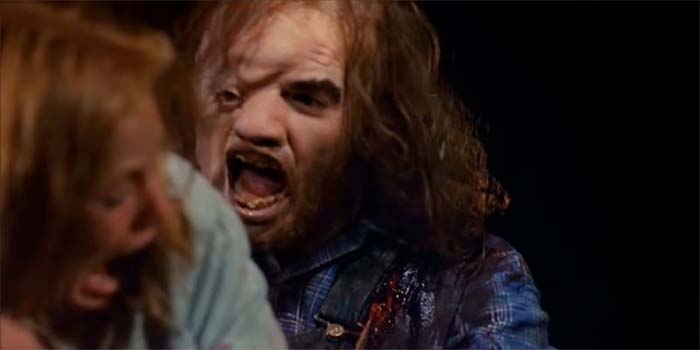
A disabled person can be vengeful or angry just like an abled person. A disabled person might have an unhealthy attachment to a typical parent, whether or not that’s a “warrior parent.” But combine disability, unhealthy attachment, and desire for revenge, and the result is another Leatherface disaster. Viewers see and hear the implication, “Hurt a disabled person, and they won’t react rationally. If their protectors don’t come after you, they themselves will–and they’ll get away with it.” Similarly, disabled people grieve as abled people do. But Jason Voorhees, who makes a macabre shrine to Pamela and presents his victims to her severed head to “make Mommy proud”–is the antithesis of typical grief. His actions reinforce the idea of disabled persons as overly emotional and uncontrollable. If one reads Jason as neurodivergent (e.g., autistic) and factors in “atypical” neurodivergent expressions of grief, he looks that much scarier and stranger. So too, might real neurodivergent and disabled people, particularly those with visible differences like hydrocephaly.
This is not to say any abled person who watches a Friday installment will subsequently abuse or attack a disabled classmate or neighbor, or become paranoid around a disabled colleague. It’s also not to say a disabled viewer would take inspiration from Jason, or any other horror character for that matter. However, none of Jason’s almost endless sequel stories give him much motive or development outside evil and revenge. Some directors attempt development, but it falls flat.
During the franchise, viewers discover Jason will not kill children or animals, commonly targeting teenage campers, counselors, or young adult picnickers or tourists instead. In one installment, Jason checks to ensure the Crystal Lake campers are asleep before striking. Another scene shows him silently reassuring a terrified little girl lost in the campground. But these read like Leatherface’s forced moments of “sympathy.” They are oddly placed and incite pity, not genuine compassion. They also taint Jason’s brief innocence in the first film. These moments raise the question, if Jason was always capable of such morality, as his “killing code” would suggest, does that not prove he is a disabled monster? If, on the other hand, his disabilities made him incapable of the rational thought morality requires, does that not prove Jason Voorhees and real people like him are irrational and immoral? Either way, these efforts are “too little, too late,” and Jason’s character arc gets stuck in a no-win situation.
Icon or Just Another Stereotype?
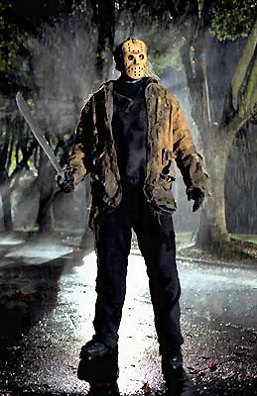
There is a different read of Jason that examines possible redemption of his story’s ableism. Some people in the disability community, particularly neurodivergent people, are now reading Jason and the Friday films through the lens of neurodivergence. Neurodivergence, or “divergence in mental or neurological function from what is considered typical,” is usually applied to conditions like autism or ADHD, although OCD, BPD, ODD, Down Syndrome, and sometimes cerebral palsy can fit under that umbrella. Some writers and film critics have asked the question, “Is Jason a neurodivergent icon,” and by implication, is he an ally to their community?
As writer Mark Wheaton of the CrimeReads blog admits, this feels like a reach, the kind of thing that happens “when you’re grasping at straws for representation and so much of what you see on screen is tropey or tracks in harmful stereotypes… I mean, it’s not like I wanted a hockey-masked spree killer…to be one of the first characters I related my neurodivergence to at the movies.” But then again, Wheaton admits, it’s not uncommon for neurodivergent consumers to identify with any “outsider” character in media.
Some disabled horror fans embrace villain protagonists like Jason Voorhees precisely because they are physically or neurologically different, or because they deal in the “anger and frustration” real disabled people feel, but are so often discouraged from expressing because that’s “monster’s currency.” It’s not “inspirational” or “uplifting.” It’s not what author Mary Johnson called an example of “good cripple” behavior. It’s the exact opposite of what the abled world wants to hear from the disabled minority. But is that enough to erase ableism from Friday the 13th?
Mark Wheaton seems ambivalent about the answer. Based on his findings, our discussion will land on a firm “no.” Specifically, Wheaton goes through a list of neurodivergent traits as given in a “broad, non-medical” definition of neurodivergence, particularly autism. These traits include “social disconnection, selective mutism, hyperfixation, selective mutism, cognitive inflexibility, stimming, [and] masking.” For all except stimming, Jason gets a “check” or a “maybe.” The only reason he is not given a “check” for stimming is because in a long line of Friday movies, Jason is never seen stimming.

However, Wheaton’s analysis of Jason’s “neurodivergent” or “autistic” traits seems based on his own definitions rather than actual, autism-based evidence or Jason’s character. For example, what Wheaton calls “selective mutism” has been attributed to hydrocephaly. Also, as Wheaton admits, the mutism exists because Jason never interacts with someone he trusts outside his mother, so there’s little to no evidence the mutism is “selective.” For another example, Wheaton argues Jason’s “cognitive inflexibility” and need for routine are evidences of neurodivergence. He cites the way Jason commits his murders the same way over and over. But it is the nature of all serial killers to repeat the same killing patterns over and over. Therefore, Wheaton’s theory doesn’t hold up.
Finally, Wheaton dismantles his own thesis when he examines the last few Friday films. He poses the question, “Isn’t there enough ‘othering’ going on” in terms of neurodivergent and autistic people. He then implies “yes,” citing the real-life stories of 21st-century school shooters like Audrey Hale and an unnamed Harlem boy, arrested just for telling his teacher he identified with a particular movie villain. Both Hale and the Harlem resident were diagnosed autistic. Then, however, Wheaton backhandedly defends the “othering” of these and other autistic people, and Jason, by pointing out the later Friday movies turn Jason from a person, undead or not, to a “demonic worm.” In Jason’s last zombie appearance, his skin melts off before his death. Once Jason dies, so does his “problematic neurodivergence.” Wheaton’s article stops here, and so does Jason’s disability.

Jason Voorhees ends his drawn out, miserable life cycle without his disability–without the thing many horror creators treat as worse than death. He lives on “reincarnated” as it were, but he is not a human. He is, instead, a worm–the lowest, most easily crushed, and most disgusting life form. He no longer has the complex and controversial motive of revenge, but on the other hand, when he finally “dies” for good, he is “pure evil.” One final film even delves into Jason’s character “after the end”: Jason Goes to Hell. The intended message is not, “Disabled people go to hell,” or, “Disability is so horrible, all forms of it belong in hell.” In any era, no matter how lacking in “political correctness,” it’s doubtful any filmmaker in any genre would’ve gotten away with that. Yet, the fact that Jason began as a disabled human, could only have a “second chance” as evil life forms, and ended in hell, is inescapable. If a viewer accepts him as neurodivergent, especially in this day and age, Jason Voorhees might be our most ableist horror “protagonist” yet.
Tune in for Weekly Ableism on Network TV
So far, horror and ableism look inextricable. If not outright ableist, horror looks like the last refuge of ableism’s “cousins” because so much of it depends on tropes like “body horror” and concepts like unhealthy family relationships or grief and rage driving otherwise stable people to madness. But classics like Frankenstein and Dracula have undergone modernized adaptations in print and film, at least some of which might “soften” their ableist origins. Slasher films might appeal for a “throwback” movie night or stormy afternoon at summer camp, but these days, they’re equally likely to be seen as scary or cheesy. In a world where ableism is still eclipsed or ignored when compared to racism, sexism, or other -isms, is it really such a “monster,” especially in horror, which is meant to disturb and disgust audiences? If it is, can audiences find true ableism in horror anymore?
These are valid questions, and both answers are “yes.” In the 2020s, horror’s ableism is harder to find than in the 1970s, ’80s, or ’00s. Just as Tobe Hooper, Sean Cunningham, Kenneth Branagh, or Luc Besson (probably) wouldn’t have put someone with cerebral palsy, multiple sclerosis, or Down Syndrome in their title roles, today’s horror directors won’t do that, or something similar, without metaphorical ironclad protection. That said, horror carries ableism’s torch today.
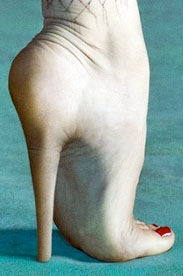
Interestingly, this often happens precisely because abled actors are tapped to play disabled characters, and may do so in exaggerated, overly “horrific” fashions. It also happens because, as noted above, creators set their stories in periods where ableism was acceptable. Failing that, they create ableist caricatures or bit characters, but cover their bases ahead of time with the statement or implication, “It’s not meant this way,” or, “This is meant as a bad example.”
Perhaps the best current example is the network series American Horror Story. Beginning in 2011, the series is 12 seasons in and still going strong. Its overall ratings have never dropped below 64%, indicating Americans indeed nurse an insatiable appetite for the gory and disturbing. American Horror Story, or AHS, is more than happy to oblige. Its seasons are rated TV-MA across the board and host some of the most graphically murderous, bloody, and sexual plots on primetime. The opening titles alone can induce a jump in heart rate and an urge to reach for the remote. At the same time, its ever-changing premises are unfailingly intriguing. They cover everything from the sinister goings-on in a “murder house,” to the sisterhood of a witch coven, to the stranglehold a cult has on followers. Creators Ryan Murphy and Brad Falchuk might be short on morals and taste, depending on whose critical reviews you consume. But clearly, they are not short on ideas.
Not every season of AHS deals with disability, illness, or any implications. Those that do, are set in historical periods wherein overt ableism was the norm. Therefore, it’s assumed viewers know better than to take the associated prejudices seriously or act on them in any way. Still, more than our other examples, AHS calls on consumers to confront any internalized ableism they experience. Additionally, more than our other examples, disabled viewers themselves aren’t exempt from that confrontation. Therefore, AHS might be both the “worst” portrait of ableism in horror we encounter, and the “best,” in that it can show us what cleaning up the ableist underbelly might look like.
Season 2: “Asylum” and Pepper

Disability first appears in AHS via Season 2, titled “Asylum.” As the title hints, this season takes place in Briarcliff Institution, 1964. The mental institution is what TV Tropes calls a Bedlam House, a place that functions more as a hellhole prison than a bastion of physical or mental health treatment. The narrative switches between 1964 and the present day (2012), as protagonist Lana Winters attempts to write an exposure piece on the asylum but gets institutionalized herself, a bit like Nellie Bly, purposely committed to New York’s Blackwell’s Island in 1887. Lana’s stay though, lasts longer than ten days, and her experiences are far more gritty and graphic. Among other horrors, she is confronted with the possibility of becoming serial killer Bloody Face’s next victim.
“Asylum” probes the “real” meaning of “insanity,” contrasting the denotation with the complex and often unjust connotations. Since Lana is from 1964, for instance, she’s institutionalized and considered mentally ill because she’s a lesbian. Mental illness is also explicitly considered a sin, as voiced by Sisters Judith, Mary Eunice, and other Catholic Church authorities overseeing Briarcliff. Yet, those who commit acts that do go against Biblical mandates (e.g., Dr. Arden experimenting on patient Kit Walker, Sister Judith paddling Mary Eunice for allowing Lana to walk freely in the asylum, both of which fall under abuse and attempted murder), are neither verbally condemned nor punished. Nor are their motives or soundness of mind questioned, though they well could be, if only because of their environment (the idea that if you want to lose mental stability, an institution will ensure it). And naturally, we cannot forget another reason a 1964 denizen, especially a woman, might be called “insane”: disability.
An Unexpectedly Complex Character
Briarcliff inmate Pepper (Naomi Grossman) is the only explicitly disabled character in “Asylum” with whom Lana and other main characters meaningfully interact. (There is a deaf and possibly mute inmate named Daniel, but he is an extremely minor character). Her last name is never given. Pepper has microcephaly, which is usually considered different from Jason Voorhees’ hydrocephaly, but can have overlapping symptoms. In Pepper’s case, microcephaly significantly affects her appearance. As implied by “micro,” her head is smaller than typical. Her teeth are small and crowded, and protrude from her mouth. Her nose is large and pointed, and her hair is mostly shaved except for a topknot-style bun. Literature describes her as “childlike and kind-hearted,” but also “highly intelligent, forceful, and sharply observant.”
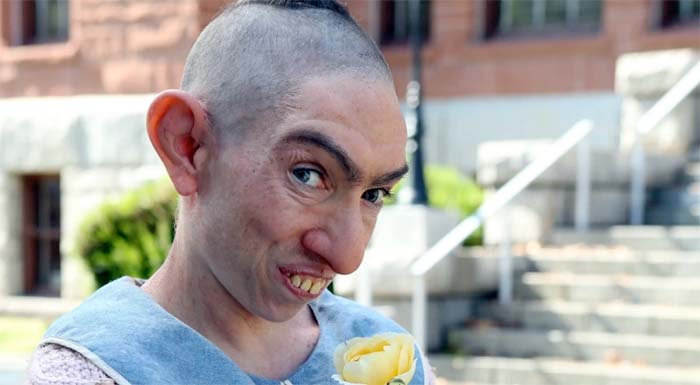
Of all our discussion’s characters, Pepper comes across the least ableist and most empowered. She engages in some classic, somewhat cliched “childlike” actions, such as asking Lana to play with her upon their first meeting. She can also come across as lacking understanding of where she is, why, and what’s going on around her. Her place as a tertiary character on top of this might make viewers think she’s the “token disabled castmate,” or the one totally innocent inmate they can latch onto when they need a reminder that draconian institutions are not solutions to mental health crises. But when Pepper is given the spotlight, her personhood and agency come forward full force. She doesn’t hesitate to defend a fellow inmate from mutilation, defies Dr. Arden, and calls psychiatrist Dr. Thredson “evil,” to his face. Later on, Pepper is one of the only inmates to escape Briarcliff successfully. In an ensuing season, viewers will learn she was once married and had “adopted” children.
A Dubious “Reward” or Cheap Erasure
If Pepper’s trajectory ended here–and granted, it is brief in the scope of the season–we could call her a successful example of disability in horror. As it is, her trajectory ultimately contributes to ableism. In a downright strange twist midway through “Asylum,” viewers find out the escapees were abducted by aliens. Perhaps as a goodwill gesture, perhaps as a contribution to the creators’ “mental hospital in space” mashup, the aliens apparently “cured” Pepper of her disability. Her appearance stays intact, but she speaks much more clearly and intelligently than before. She is no longer seen as childlike or innocent. This is underscored when Pepper tells fellow inmate Kit she was only committed because she “looked like a freak,” and she never committed the murder of which her brother-in-law accused her. Pepper spends the rest of her screentime in “Asylum” as “the aliens’ mouthpiece,” until her eventual death.
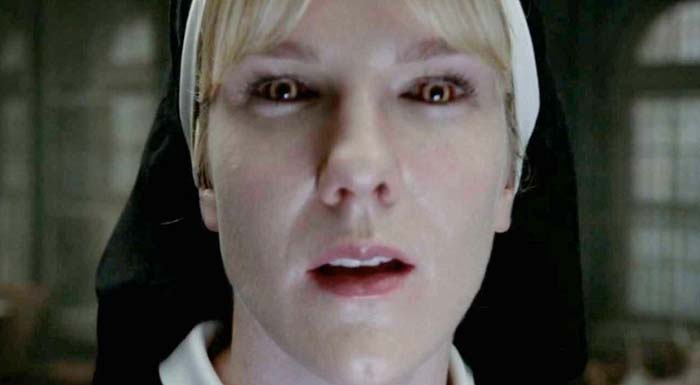
It’s unclear throughout “Asylum” if the extraterrestrials were real. The Devil himself features, as does a dark angel named Shachath, a “good” Angel of Death Satan fears. These beings have clear missions at Briarcliff; the Devil (both the real one and a female spirit claiming to be him) possesses certain characters, while Shachath escorts certain inmates to peaceful ends. Yet the overall purposes of their interactions outside possession or death are unclear. Therefore, it’s suspected Pepper got her lucidity and enhanced intelligence from Shachath. If so, it could be read as a “reward” or compensation for being accused of murder and committed, or even for being born with microcephaly.
This would imply Pepper “earned her happy ending,” which might put her on a par with other, abled fictional characters. That is, a lot of abled characters also go through trauma and are “rewarded” or compensated in some way (see Randle P. McMurphy of One Flew Over the Cuckoo’s Nest. For non-institutionalization or non-death examples, see Jane Eyre of the eponymous novel, Una of The Faerie Queen, Taran of The Chronicles of Prydain, or the protagonist of The Divine Comedy). The problem with Pepper’s “earning,” though, is that it involves curing her disability. Regardless of her era, the cure reinforces the message that in the past and present, cure is the best outcome for a disabled person–if that person will, or must, continue existing.
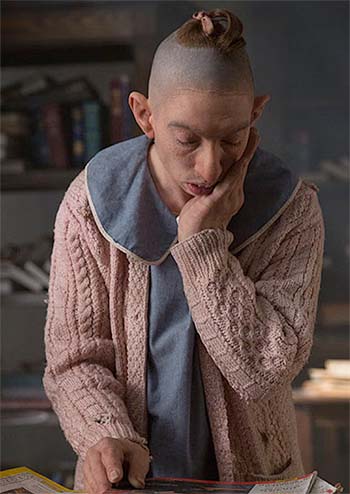
Pepper’s trajectory is also problematic for a number of smaller reasons. One, after she reveals the reason behind her commitment, no one seeks justice for her, including those who might have the power to do so (e.g., Lana Winters, a high-powered journalist, or Mother Claudia, who facilitated Lana’s release from Briarcliff). Two, after being cured, Pepper serves only as a “mouthpiece” for the aliens–or other beings–who cured her. She’s not allowed to express agency any other way, the implication being if she tried, her newfound abilities might be taken or she might be left worse off than before. The mechanism of Pepper’s cure is itself questionable if not outright offensive; even hinting that demonic beings or good, but dark, angels helped her implies similar dark messages as did Jason Voorhees’ ending in hell. Finally, the fact that Pepper dies a Briarcliff inmate anyway, gives her character and life an air of pity. She was never released or truly vindicated, viewers are meant to learn. But at least, the creators imply, she was finally able to tell her “real” story and die with some form of happiness–because she could communicate like a “normal” person.
In “Asylum” then, Pepper’s character begins as promising, but ends up erased. She does fare better than many minor disabled characters on the show (e.g., Addy from “Murder House,” a woman in her mid-30s with Down Syndrome. Addy’s ability to see the murder house’s ghosts is treated as a “superpower” or “substitution” for Down Syndrome, when she is onscreen at all). But Pepper’s initial stereotypical characterization, her unexplained (and inexplicable) cure, and her eventual death, reveal AHS’ creators were in no way ready to move beyond marginalization of disabled characters in the show’s second season. As for fans, they don’t often discuss ableism in conjunction with this season or Pepper alone. The ableism specter would come back to haunt AHS shortly, though.
Season 4: “Freak Show” and Most of the Cast
“Freak.” It’s one of the oldest and “easiest” insults the abled majority can throw at a disabled person. It’s an insult, so if a discerning person hears it, they will correct or scold the offending party. Yet, it’s not always regarded as a slur. In many cases, users will claim they weren’t talking about disability at all. So, like many disability slurs–“retard,” “spazz,” and so on–“freak” gets a pass. More than a pass, “freak” often gets treated like a reclaimed slur or backhanded compliment. This might be because historically, “freaks” was an accepted name for an entire minority group in society–usually disabled people. Often, “freaks” found employment and a sense of family through their own shows. The “freak show” got a season in the spotlight via an eponymous Season 4 of American Horror Story.
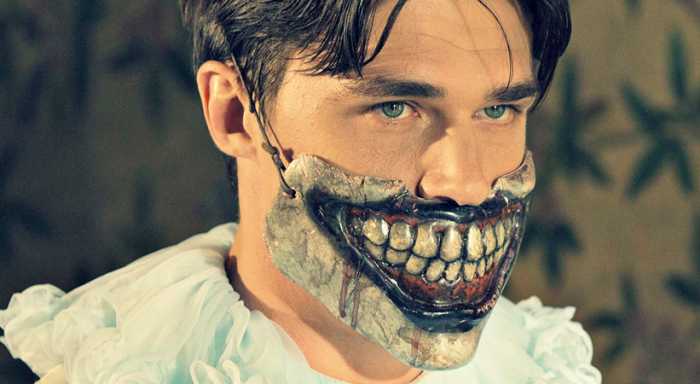
Pepper appears in “Freak Show,” this time with more agency and characterization alongside husband Salty, foster daughter Ma Petite, and in flashbacks, baby nephew Lucas. What makes “Freak Show” ableist, however, is its entire setup and its treatment of most of the cast. The majority of that cast is disabled in this season. Disability is not the only motive for villainy here, which might be considered refreshing under different circumstances. When taken with other motives plus the season’s overall tone though, viewers find there is little redemption for the characters or disability itself in “Freak Show.”
Pepper’s Return: “Peppered” With Tragedy
In “Freak Show,” which takes place largely in 1958, we learn Pepper is (was) married, to a fellow performer in the titular show, “Fraulein Elsa’s Cabinet of Curiosities.” Christopher Neiman plays Salty, a performer whose real name is not known. He has microcephaly like Pepper, but is considered “mentally disabled.” Unlike Pepper, he is never said to show any traits to the contrary, nor does he show any to the viewers. Indeed, Salty is given almost no focus, and dies in his sleep before the only episode in which he has a significant role (mostly shown in flashback). Additionally, it’s hinted that Salty and Pepper’s marriage was never legal.
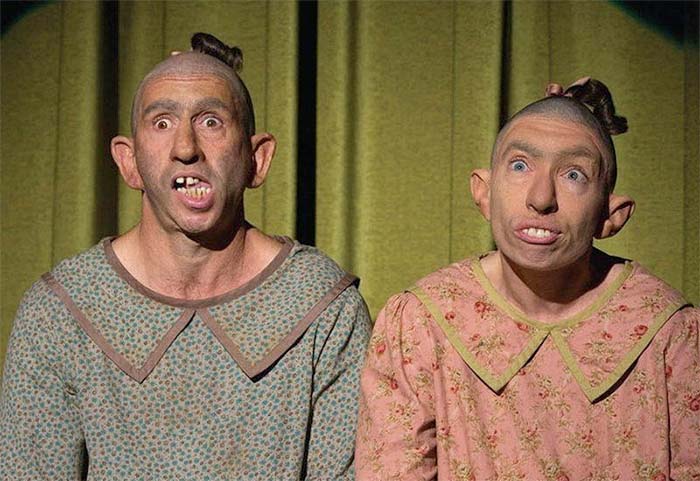
Nevertheless, Salty and Pepper were happily married from all appearances. “Orphans,” the episode that delves into Pepper’s backstory, shows Pepper delaying Salty’s funeral when she refuses to leave his corpse. She and Salty were also the “adoptive parents” to Ma Petite, a fellow performer who’s a grown woman, but looks like a child because of achondroplasia (a rare form of dwarfism). After Salty dies from a stroke though, show director Elsa Mars becomes concerned about the depth of Pepper’s grief and ultimately sends her to live with her sister, Rita. At the time, it’s unclear whether Elsa’s motives were malicious, but this decision leads to Pepper being committed to Briarcliff. The events of Season 2 ensue.
What is more interesting and tragic than this “inciting incident,” though, and what adds to Pepper’s existent ableist framing, is why and how she ends up at Briarcliff. Pepper lived with Rita for a few years, but as a “secret” family member, at the insistence of her brother-in-law, Larry. Pepper’s situation improved somewhat after Rita’s son, Lucas, was born with an undisclosed deformity and Rita let Pepper “mother” him rather than be associated with a disabled son. But rather than be “hampered” with a disabled sister-in-law and son, Larry hatched a plan to murder Lucas and frame Pepper for it. Larry snatched Lucas from Pepper during bathtime, cut off his son’s ears, and drowned him. According to Mary Eunice of Briarcliff, and later Pepper herself, one look at Pepper’s microcephalic appearance was enough to get her permanently committed.
The combination of Pepper’s arcs in “Asylum” and “Freak Show” make her an example of everything today’s writers and creators are advised not to do when crafting a disabled character. As for Larry and Rita’s actions, they are suitably dark and despicable for a frame-up and the horror genre. In terms of ableism, they are understandable if we consider these people are unquestionably villains. Creators Murphy and Falchuk do not paint them as victims, either, as sometimes happens with the real-life families of disabled people who choose to villainize them. Much like Leatherface though, Pepper ends up less a relatable person than a caricature upon whom trauma is piled for the sake of the macabre. She is sacrificed for the sake of genre conventions, and since disabled characters are so often “sacrificial lambs” in fiction anyway, this feels like a cheap shot. It might make her cure a relief for some viewers, except that disability gets erased either way.
Differences and Depravity
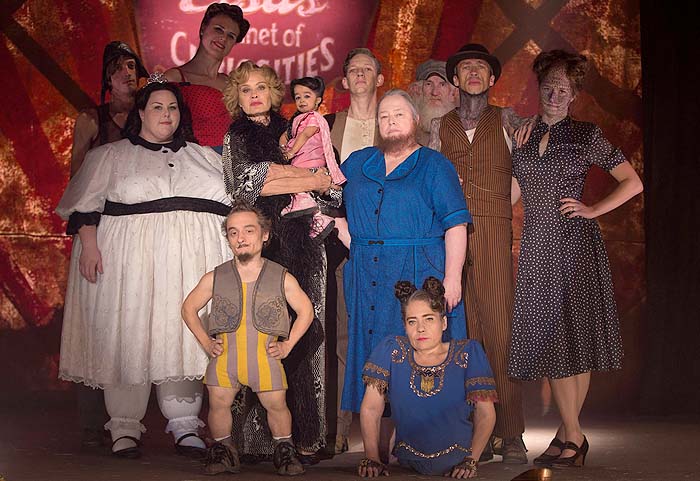
Besides Pepper and Salty, Fraulein Elsa’s Cabinet of Curiosities hosts a whole family of disabled people who, it’s implied, wouldn’t be employed or accepted otherwise. The denizens are almost too numerous to name here, and too numerous for everyone to warrant an in-depth discussion. As a group though, they do contribute to both the uniqueness of “Freak Show” and the contemporary version of ableism seen in American Horror Story.
Many of the examples of ableism seen across the Cabinet of Curiosities family are familiar by now. For instance, the many performers with forms of dwarfism tend toward childlike appearances and personalities. Ma Petite, in particular, is a victim of both murder and ableism. That is, she’s a grown woman with achondroplasia, and it’s assumed she might’ve learned to think and act as an adult outside of a “freak show” environment. As it is though, Ma Petite’s extreme trust and naivete are never questioned. In a way, they’re held up as ideal and helpful, as they let her be a “child” to Pepper, who according to Elsa, “needs” her to be so. Thus, when Dell Toledo, one of the season’s murderers, targets Ma Petite, it’s treated as unfortunate, but a matter of course. The circumstances don’t quite cross into victim-blaming, but skirt the line.
On the other end of the spectrum, in the tradition of Frankenstein’s Creature and Dracula, we have characters who take destiny into their own hands via murder. These murders run the gamut from brief stories, as when Legless Suzi stabbed a fellow beggar out of jealousy, to a flashback incident wherein conjoined twins Bette and Dot Tattler killed their abusive mother. They culminate in the murder of Dandy Mott, the season’s major villain, who ends up at the family’s mercy after buying out Elsa and bullying the performers to their breaking point. As Bette Tattler puts it during season finale “Curtain Call,” despite the family’s “freakish” appearances, Dandy, who has murdered multiple people including his own mother, is the biggest freak of them all. Since Dandy is abled and at least puts on a sane facade, there is a faint, brief sense of poetic justice to his death.
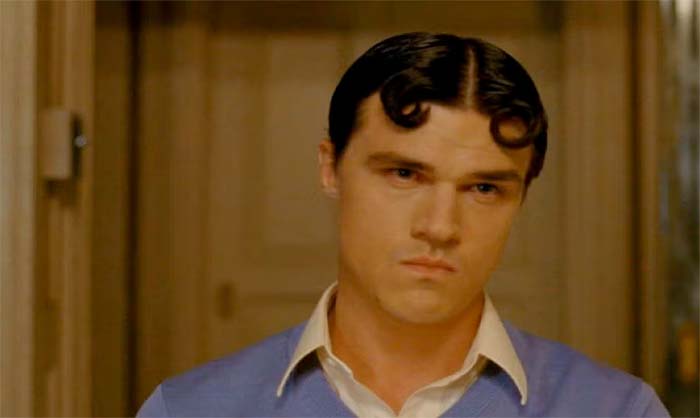
However, the fact that “Freak Show” paints an entire cast of disabled or mentally ill persons as either helpless, childlike innocents, psychotic demons from the womb, or irreparably traumatized murderers, cannot be ignored. The body count, coupled with the frequency of real-life historical freak shows, makes the season more discouraging and rage-inducing than scary in the sense that horror is supposed to be. Caitlin Busch, writer for online magazine Inverse, cites “Freak Show” as the season that “almost ruined everything” for her, despite the fact that AHS had previously made her a horror fan, after years of looking askance at the genre.
As Busch writes, the reprehensible history of freak shows “deserves to be talked about, just not this way.” She writes, “Once you peel back the mask…[you find]…no reversal of the trope, no voice for a tortured minority group… The mistreatment of the physically disabled [and] different shouldn’t be sexualized…and cranked up to 11 for the amusement of the masses.” With a nod to the “laziness” of the aliens in “Asylum” and a “killer clown” added to “Freak Show” just for kicks, Busch wraps up her rationale for “noping out” of the season and almost out of the fandom. It’s worth noting Busch doesn’t mention having any kind of disability herself, signaling that at least “Freak Show” finally got a majority abled TV audience to acknowledge and talk about ableism as a real problem. As other presumably abled viewers asked on other outlets such as Reddit, “What the hell was with the terrible disability episode?”
Elsa Mars: Horrible Example of “Abled Savior”
We could leave our discussion of this most recent contemporary ableism here. However, we would be remiss not to bring up “Freak Show’s” central character, director Elsa Mars. Elsa is a classic example of an anti-villain, or a character who is ultimately villainous even though they show examples of virtue, heroism, or the desire to exhibit such. Elsa is an anti-villain in large part because she truly believes she’s doing the right thing, the only good thing, for the people she “rescues.”
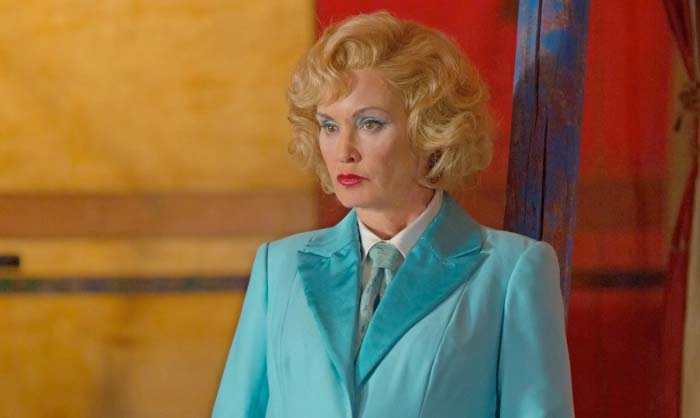
In a way, Elsa does “rescue” the performers who end up in her “Cabinet.” Viewers find out most if not all the performers would’ve been “shipped off” to asylums without her intervention–again, because of disabilities or, occasionally, benign mental symptoms rather than being dangers to themselves or society. Most if not all performers have also been abused and exploited, as in the cases of Pepper, Bette, Dot, and Barbara, AKA Ima Wiggles, a “fat lady” whose mother coerced her into a draconian diet camp as a child. Viewers who have seen the “Asylum” season might initially side with Elsa, knowing what asylums and institutions of the 1950s and ’60s looked like. Even those without such knowledge might well side with Elsa based on backstories alone. However, just as “Freak Show” reveals murder, extortion, rape, and other crimes going on “behind the curtain,” it reveals plenty of Elsa’s hidden darkness.
In terms of horror’s definition–a genre created to disturb and scare–Elsa Mars easily has the longest and most graphic list of “qualifications” in the modern era. She has a past as a 1950s porn star and dominatrix, working in a brothel. It’s unclear if Elsa pursued this career willingly or not, but the fact that she fancied herself a star more than being treated like one and was compared to Marlene Dietrich enough that hearing the comparison became her “Berserk Button,” hints she suffered deep hurt and insecurity. Elsa was “ruined” when her superiors drugged her, cut off her legs, and left her for dead. The implication is, mounting and running a “freak show” was one of her only options for keeping her star power alive at that point. Elsa’s ensuing murder of “bearded lady” Ethel Darling, particular exploitation of Pepper, attempted murder of Paul the Seal, and selling of conjoined twins Bette and Dot, round out her wicked resume. Yet, not even these make her our most wicked or ableist horror villain.
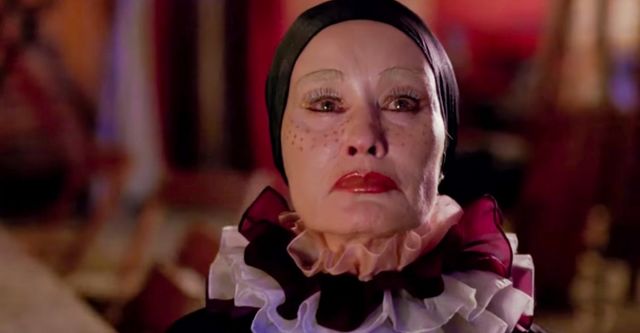
Elsa’s real wickedness, the heart of her disturbing nature, comes from her bone-deep hypocrisy and jealousy. Many horror villains, particularly those of AHS, show narcissistic tendencies. Elsa Mars, though, lives the motto, “It’s All About Me.” Perhaps because of her past, perhaps out of twisted determination, she “rescues” her “family” and treats most of them with a veneer of kindness. Ma Petite, especially, benefits from this veneer. But if anyone or anything threatens Elsa’s power, that mask quickly drops. She embraces a level of jealousy akin to Pamela Voorhees, except Elsa is less a “warrior mom” than a scorned employer with the power to strip what little quality of life her wards possess. For instance, when Elsa discovers Dot has a great singing voice, she plots to take the other woman down.
All this makes Elsa look like a twisted “abled savior,” or horror’s version of an abled character who exists to shelter and protect disabled characters who wouldn’t otherwise have quality of life. If she really were such, it would be ableist enough. The truth though, is that Elsa has kept her double amputee a secret from her performers and everyone else she meets for years. This can be read sympathetically to a point. It makes her apparent “soft spot for the disabled” understandable, and makes her appear redeemable via actions like murdering the abled Dell Toledo when he murders Ma Petite, whom Elsa genuinely loved. However, considering the majority of Elsa’s actions are self-absorbed, and considering she is still “using” disabled people for profit, she reads more as a category traitor. Any moments of genuine humanity, such as love for Ma Petite or brokenness over Pepper being committed, read tarnished, much like Leatherface or Jason Voorhees’ brief encounters with “humanity.”
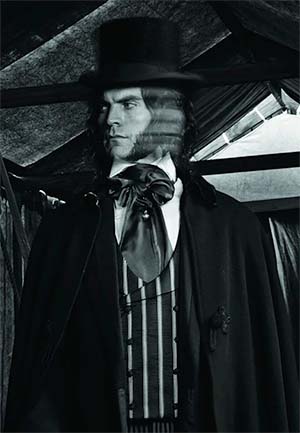
Like everyone else discussed here, Elsa ultimately dies, killed at the hands of the literally two-faced Edward Mordrake (another disabled villain). It’s considered suicide by police, meaning Elsa also counts as a disabled person who took her own life and thus, perpetuates the stigma that disabled life isn’t worth living. “Freak Show” reveals she had actually sought death long before the event itself. The finale is explicit that she goes to Heaven, and that some of the people she cared for wait for her there. On the other hand though, this reads as if Elsa’s forgiveness and redemption are too easy. It’s debatably incongruous when taken with the season and overall show’s tone. And while it’s great to see a disabled character end up in Heaven without being Too Good for This Sinful Earth, there’s too much ambiguity for Elsa’s case to be satisfying. Her final years as a star of the short-lived but popular “Elsa Mars Hour” only confuse the issue.
Should Disability Have a Place in Horror?
This is a complex, thorny question, and there isn’t a clear answer. Horror, by definition, presupposes situations like murder, gory, dismembered crime scenes, macabre legends, and yes, “body horror.” Therefore, disability might always be a natural conclusion to some degree, especially if the story deals with medicine, forensics, or recovery from serious injury or illness. Additionally, horror often presupposes rage, revenge, unrequited love, or similar motives for crimes or otherwise antisocial, macabre actions. Disability is not the only reason for these emotions or circumstances. Nor is rage or revenge the ideal response to being born with or acquiring a disability. That said, it is just as ableist to claim disabled people should not experience these emotions, as it is to claim they are exclusively fueled by them. It is just as ableist to assume disabled people are perfect angels, as it is to assume they are barely humanized demons.
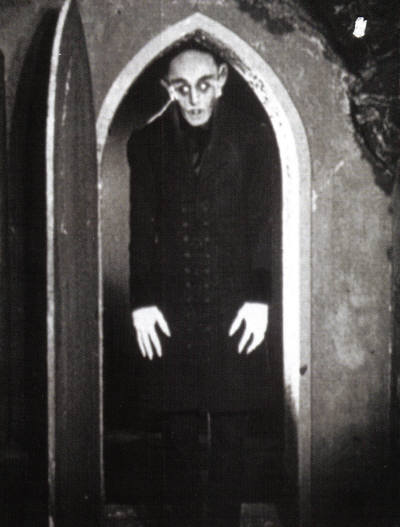
The most obvious answer might be, “Simply create or play disabled characters as human.” But in fiction, particularly horror, this is not as easy as it sounds, because horror also makes room for the supernatural, the “other than” human. Of course, another solution would involve “cancelling” horror altogether, at least the types that use actual or “coded” disabilities to horrify or disturb (e.g., vampires, monsters, werewolves). But if creators did that, they would likely be accused of pandering. Disabled horror fans, and consumers in general, would be villainized yet again (as in, “Their complaining ruined horror and a good scare/good time for everybody else.”) More importantly, “cancelling” such examples of horror would mean losing some classic archetypes and tropes. It might well mean cutting off a cross-section of disabled horror fans who identify with these characters, such as Matt Lee, who writes these monsters made him the horror fan he was by giving him a way to explore and understand his disability and place in the world.
The answers we will explore here are not “answers” as such, in that they have not been tried enough to become “classic” solutions or “touchstones.” But they are alternatives to what has been done that, it is hoped, still respect the genre’s roots and the solid underpinnings that came before (e.g., the enduring legend, the evil if misunderstood figure, the figure who is truly evil and requires heroic vanquishment). Using these alternatives, and putting disabled characters or creators in strategic, influential places, will help remove the specter of ableism and replace it with a spirit of inclusion that can still be plenty scary.
Create Three-Dimensional Disabled Heroes
Just like adventure stories, fairytales, or science fiction, horror has clear and powerful villains. These villains may be misunderstood or victimized themselves, but often, they must be defeated or at least held accountable. Such a mission requires a hero, often more than one if the subgenre calls for it (e.g., a slasher, a detective story with a horror bent). One of the easiest ways to ensure disabled characters can participate meaningfully, sans ableism, is to let at least one character be part of the heroic contingent.

Be careful of a few “horror booby traps.” Namely, horror often demands a villain wicked enough to engage in graphic, gory murder. Thus, the opposing heroes might look and act unusually virtuous. In this setup, it would be easy for a disabled hero to slide into angelic, if not outright Too Good for This Sinful Earth. Even failing that, a disabled hero might be the most virtuous of the team, or if he or she is acting alone, the most virtuous of the “good” characters. He or she might accidentally become the one who automatically questions violent methods (e.g., injuring or killing because, “the villain did it first”). He or she might accidentally become the one nobody swears in front of, or who has never had sex, or who is just a bit too cute, clumsy, or wholesome to be believed.
A disabled hero also shouldn’t be an actual child or teen unless the overall story calls for it (e.g., a creative take on a “summer camp” story). He or she can have cognitive disabilities, or autistic “special interests” that others find childish, but should not be treated as a child, unless the person doing such is an obvious villain or bigot, and/or calling out this behavior is a relevant plot point. Nor should a disabled hero have a compensating “superpower.” Being well-versed in a subject, making straight A’s, or having a hidden talent is okay. Having a compensating talent that doesn’t come into the story, doesn’t make sense (e.g., a character with selective mutism who shows off perfect pitch exactly once), or is stereotypical (e.g., a blind person whose sense of smell outstrips a bloodhound’s), is not okay.
When crafting a disabled hero of horror, think about what kind of horror they are facing. Is it an actual person, and if yes, what kind of horrific powers or tools do they have? How could a disabled hero match or outmaneuver these strengths? For example, suppose your disabled hero is ambulatory, but has cerebral palsy and wears leg braces or experiences pain after walking for a certain period. Pursuing a vampire through a manor filled with stairs will be a natural challenge. But if the hero’s team can get the vampire cornered in one spot, say, the clock tower, perhaps your hero can use his unaffected hands to make a planned archery or gunshot from a hidden vantage point. The shot hits an exact point on the clock, a silver- or garlic-based chemical weapon is released, and the vampire is vanquished.
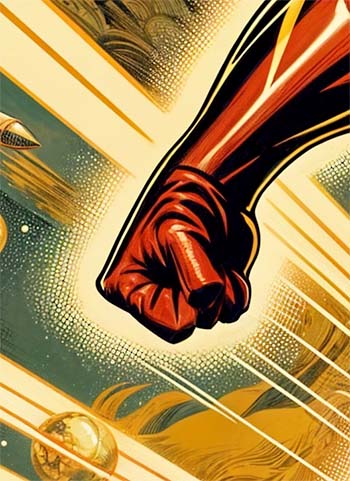
Craft a horror scenario in which your hero or heroine has strengths that will play a key role in defeating either a villain or adversarial forces (e.g., an autistic, literarily-gifted heroine whose memorization skills mean that, though she struggles verbally, she’s also the best one to speak the poem or verses that neutralize a demon). If your hero (ine) works alone, give him or her an equal chance to succeed or fail–and if failure happens, let it be for a reason other than disability, and provide another chance, perhaps through a sequel or “extra life.” If your hero (ine) is part of a team, let them contribute, be right or wrong in equal measure when possible, snark about disability, make other jokes, challenge the villain, and in general, make their presence known.
Disconnect Villainy from Disability
One of the biggest problems with horror as it stands is how closely murder, mayhem, and ugliness have been tied to disability within the genre. Again, this is difficult to escape completely because of the “body horror” trope, which we’ll deal with momentarily. Outside of body horror though, there are specific ways to disconnect disability from evil, and they should be used. This is not to say villains can never be disabled in the 21st century. Disabled villains are still written, and occasionally written well, as seen in other genres (e.g., fantasy author Mary Mecham’s take on Captain Hook, who is written as a hero but accepts being villainized for the sake of his calling), Zuko from Avatar and the Last Airbender, a visibly scarred villain who gets a multi-episode redemption arc). But since disability has been conflated with evil across genres for centuries, continuing the conflation via horror doesn’t help.
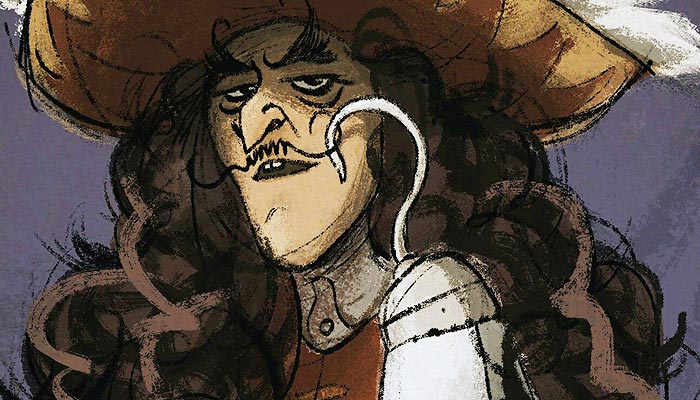
This in mind, it’s best to move toward creating horror villains whose villainy comes from within. These villains can still have familiar motives like revenge or unrequited love. But just as creators wouldn’t want the motives themselves to read cliche, neither should the accompanying villain’s personality or horrific acts. For instance, creating a beautiful or handsome villain is an easy solution, as in, “beautiful body, ugly soul.” However, that’s also cliched unless the creator is well-known, or extremely well-versed in horror. An average-looking villain, someone who “hides in plain sight,” is a better solution.
Craft misunderstood or traumatized villains carefully, too. Again, these villains will work better than a physically or cognitively disabled villain, or a mentally ill one, because their villainy comes from within. But the inherent risk is a narrative that misrepresents trauma and the treatment thereof. Through dialogue, introspection, or flashback, clarify why a villain had a visceral reaction to a particular trauma when someone else might have been more resilient. Consider having the villain experience treatment, but reject it for whatever reason, or have that treatment sabotaged because of a failing or negligent system. Alternatively, give the villain solid allies–not henchmen–who steer him or her toward a better path and may succeed in small ways, but ultimately fail. Note the allies can be victims, but need not be. In fact, the story may be more powerful and disturbing if the allies are “left standing.”
Finally, if you use a villain who is not human but has a human form or is humanoid (e.g., werewolf, vampire, monster, extraterrestrial), do not make them unnecessarily grotesque or “code” them disabled or chronically ill, anymore than their archetype demands. In other words, vampires’ history means they are already associated with porphyria. There is no erasing this without erasing a vampire’s essence. Werewolves have already been “coded” as chronically ill, and recently, too (see J.K. Rowling’s assertion that Remus Lupin is a stand-in for people with HIV/AIDS). But there are ways of handling this “coding” in respectful, non-ableist ways.
One way to write a disability-friendly vampire story, for instance, might involve spending some time on vampire culture or the myths and truths of vampirism. Maybe drinking blood and “stealing” life forces, especially the life forces of innocents like children or animals, has been vampire tradition for some time. But as with books like the Twilight saga, vampires who take these life forces are now considered evil and dangerous. In contrast, most vampires have sought “blood alternatives,” drink the blood of consenting givers, or seek the blood of life forms already deemed threats (e.g., fictitious, dangerous animals in a horror/sci-fi story). Perhaps vampires who break “blood law” must give up years of their lifespan as part of their sentences. Or, perhaps vampires acknowledge that their kind arose from groups of humans who suffered porphyria and other blood disorders, and now they, the “full-blooded” vampires, are seeking justice for affected ancestors and descendants.
Handle Body Horror With Caution
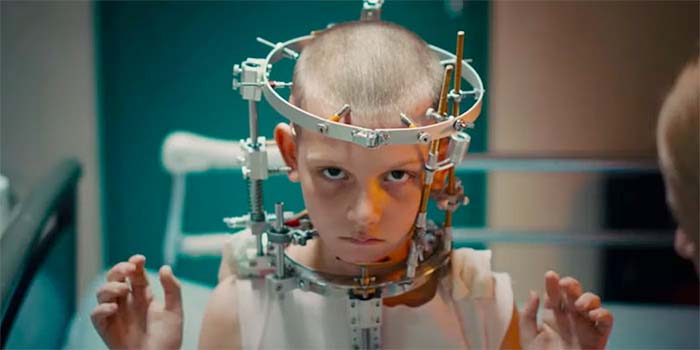
Body horror is one of the trickiest horror genre tropes. No matter how inclusive a creator tries to be, body horror is almost inescapable depending on the type of story the creator wants to tell, how disturbing they want to be, and what kind of background they have. After all, a doctor, police detective, or chemist who is also a writer, has a lot of experience with the human body and medical side effects. It would not only be natural to explore these experiences in creative writing, but would also give the creator extra credibility with readers and potential publishers. Besides, as mentioned, “body horror” does not just extend to disability. It can also extend to aging, gratuitous blood and bruising, or any situation that causes the body to act in a way other than it “should.” And just as disabled people should not be barred from heroic or villainous roles, they should not be exempt from bodily horror. It could be argued that disabled people are better acquainted with some forms of the trope. For instance, this writer lives with cerebral palsy and well remembers personal terror when related vertigo emerged, even though her research indicated it was most likely benign.
Therefore, body horror can and should still be part of modern, inclusive horror stories, but not, as Caitlin Busch wrote, in a “freakish” way “for the entertainment of the masses.” Instead of putting disabled or elderly people on display for instance, creators might try using a horrific plague that is no respecter of persons and leaves behind both abled and disabled survivors–those with congenital and acquired disabilities (see Stephen King’s The Stand or the movie Contagion as inspirations). Creators might also try a “disease” whose “symptoms” are tied to AI or a glitch in implanted DNA, which again, neither makes disability its worst consequence, nor targets disabled, ill, or otherwise vulnerable persons. In both these cases, the “body horror” symptoms could be fantastic and unrealistic–shriveling, bright purple skin patches or random, bloody wounds, for instance–or a mix of realistic plus unrealistic.
Alternatively, body horror can exist as horrific aftermath. A dismembered corpse can be evidence of how far a villain is willing to take the quest for their goals. A survivor who has lost a limb or a sense can speak honestly about emotions connected to the event or offer graphic photos, yet still live a fulfilled life, which includes desire for their attacker to experience justice. Someone like a werewolf, were-creature, vampire, or other “horrific” shapeshifter can be a three-dimensional character with agency, but grapple with mixed feelings regarding his or her transformation. In a twist on the body horror trope, the “horror” could even come from a character’s pursuit of physical perfection. An example might be a physician or geneticist who, despite warnings about experimenting with plastic surgery and DNA, performs unethical procedures on humans, humanoids, or sentient animals. Any number of horrors could result, including a physically perfect villain justly trapped in a more inclusive form of body horror, such as a test tube or a stone or ice form.
Any Genre Without Disabled Voices is Scary
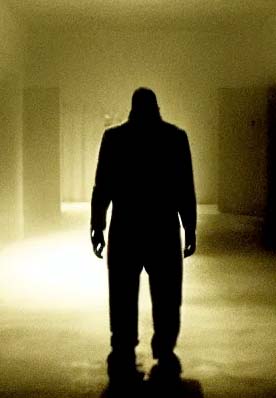
In the twenty-first century, disabled characters and disability-centric stories are becoming increasingly common. Ableism still isn’t discussed as commonly as racism, sexism, or discrimination against various orientations or genders. Yet in most genres, it’s now considered insensitive at best, bigoted at worst. Unfortunately, because of a long history and associated tropes like body horror and humanoid protagonists, horror seems to be the exception.
As a genre, horror is often the last refuge of ableism. Its protagonists are often hideous and misunderstood, if not outright villainous. Sometimes, these misunderstood villains are only given sympathy or empathy insofar as their obvious mental illnesses can be “forgiven.” Other times, these characters and the associated ableist tropes are handwaved because the protagonist is physically disabled or deformed and scary-looking, or cognitively disabled and tacitly understood as “other.” Whether the horror story’s medium is a novel, a film, or a TV episode, the general ableism is often excused because the story takes place in a historical period and, “That’s just the way things were then.” Failing that, creators “code” their characters as disabled, but can reasonably say, “That’s not what I meant” and be believed.
Just as politically correct history does not exist, politically correct literature, film, and other mediums don’t exist. Nor do they have to, in order for disabled creators or characters to gain real voices. But disabled people, real and fictional, should not be left out of horror. Authentic disabled voices and stories, disturbing and gory or not, are in fact the stories that will keep horror from being “cancelled” on the grounds of ableism. Therefore, going forward, horror creators must focus on centering disabled voices rather than making them cheap, mass-produced, pitiable entertainment. Authentic disabled entertainment in horror will not sacrifice any time-honored conventions. What it will do, is open the genre where disabled people have simultaneously felt the most and least welcome. In so doing, “new” disabled horror will communicate, “Disabled people are neither angels nor demons. They are humans, and as such, they can be anything they want. As such, they are welcome everywhere.”
Works Cited
“American Horror Story Characters: Elsa Mars.” https://tvtropes.org/pmwiki/pmwiki.php/Characters/AmericanHorrorStoryFreakShow Retrieved on October 8, 2024.
“American Horror Story Characters: Pepper.” https://tvtropes.org/pmwiki/pmwiki.php/Characters/AmericanHorrorStoryAsylum Retrieved on October 8, 2024.
“American Horror Story Recap: Asylum.” https://tvtropes.org/pmwiki/pmwiki.php/Recap/AmericanHorrorStory?from=Recap.AmericanHorrorStoryAsylum Retrieved on October 8, 2024.
“American Horror Story Recap: Freak Show.” https://tvtropes.org/pmwiki/pmwiki.php/Recap/AmericanHorrorStory?from=Recap.AmericanHorrorStoryFreakShow Retrieved on October 8, 2024.
Anderson, Billie. “Body Horror as a Tool for Re-Imagining Disability Representation.” www.moviejam.com. October 11, 2022. Retrieved on October 8, 2024.
Andrews, Sinaoife. “Porphyria the Real Life Vampire Disease.” Complete Anatomy Community Blog. October 28, 2022. https://3d4medical.com/blog/porphyria-the-real-life-vampire-disease Retrieved on October 8, 2024.
“Behind the Mystery: Acute Hepatic Porphyria.” (2021). https://www.youtube.com/watch?v=qzgCM89Tjsc Retrieved on October 8, 2024.
Busch, Caitlin. “How American Horror Story Made and Betrayed a Horror Fan.” Inverse Magazine (September 6, 2017). https://www.yahoo.com/news/apos-american-horror-story-apos-183900280.html Retrieved on October 9, 2024.
Dang, Duy. “Vampirism and Infection Theories in Bram Stoker’s Dracula.” Xavier Journal, University of Louisiana, April 1, 2013. XULA Digital Commons. Retrieved on October 8, 2024.
Draven, Julian. “Making a Monster: Queerness and Disability in Gothic Literature.” PDX Scholar, June 12, 2022. https://pdxscholar.library.pdx.edu/cgi/viewcontent.cgi?article=2481&context=honorstheses Retrieved on October 8, 2024.
Edwards, Greg. “Thug Notes: Dracula.” https://www.youtube.com/watch?v=Juu-7H0Z2RU Retrieved on October 8, 2024.
“Friday the 13th Pamela Voorhees Reveal.” https://www.youtube.com/watch?v=snqLyy4ELjY Retrieved on October 8, 2024.
“Friday the 13th Wikipedia.” https://en.wikipedia.org/wiki/Friday_the_13th_(franchise) Retrieved on October 8, 2024.
Gage, Marielle A. “The Last Woman Standing: Mary Shelley and the Enduring Power of Frankenstein.” (2018). www.historyassociates.com. Retrieved on October 8, 2024.
Lee, Matt. “The Monsters that Made Me: Growing Up Disabled, All My Heroes Were Villains.” Polygon (May 13, 2024). https://www.polygon.com/entertainment/24128340/horror-movie-monsters-disability-relationship-essay Retrieved on October 8, 2024.
Mary Shelley’s Frankenstein. (1994). Dir.: Kenneth Branagh.
“Porphyria Symptoms and Causes.” (April 5, 2023). Mayo Clinic. https://www.mayoclinic.org/diseases-conditions/porphyria/symptoms-causes/syc-20356066 Retrieved on October 8, 2024.
Shelley, Mary. Frankenstein. Independently Published, December 18, 2019. Originally Published January 1, 1818.
Simpson, Corrine. “Lucy Westerna: An Analysis.” The Crypt. (August 9, 2013). https://corinnesimpson.ca/the-crypt/essays/lucy-westenra-an-analysis/ Retrieved on October 9, 2024.
“SparkNotes Dracula Study Guide.” https://www.sparknotes.com/lit/dracula/ Retrieved on October 8, 2024.
Stoker, Bram. Dracula. Independently Published. Originally Published May 26, 1897.
“Texas Chainsaw Massacre Wikipedia.” https://en.wikipedia.org/wiki/The_Texas_Chain_Saw_Massacre Retrieved on October 8, 2024.
Wheaton, Mark. “Jason Voorhees: Neurodivergent Icon?” (September 15, 2023). CrimeReads. https://crimereads.com/jason-voorhees-neurodivergent-icon/ Retrieved on October 8, 2024.
What do you think? Leave a comment.




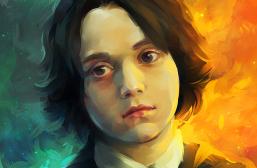

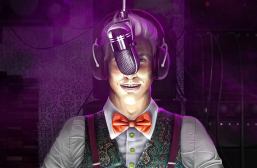
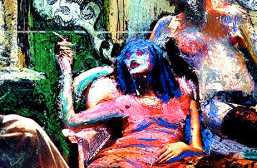



It’s fascinating—and disturbing—to see how many classic horror characters are ‘coded’ as disabled, and the message that sends to viewers.
I’ve never thought about how often disability is linked to evil in horror. Frankenstein’s monster as ‘grotesque’ and Dracula as ‘chronically ill’ is eye-opening. I hope more creators start rethinking how they portray disabled characters.
Ableism in horror has gone unnoticed for too long. We’re quick to cancel other problematic tropes, but ableism remains disturbingly ingrained in the genre.
It’s time for change!
The history of institutionalization in horror is troubling. Asylums and ‘freak shows’ are still go-to settings for horror. It reinforces stigma around mental illness and disability.
Reading about this in classic horror made me reflect on modern stories. Even now, we rarely see disabled characters in complex, humanizing roles—they’re almost always victims or villains.
As someone living with a disability, this article really resonated with me, especially the part about Pepper from American Horror Story. While the show does present Pepper as more than just a stereotype, it still falls into ableist traps by using her as a vessel for tragedy and pity. It’s like her life only has value once it’s filled with sorrow and redemption, which reflects a wider issue in how disabilities are portrayed in media.
I liked the section where you talk about how horror can either challenge or reinforce ableist ideas. It’s true that horror, in particular, could be such a strong platform to explore the complexities of living with a disability… our fears and our strengths, yet it so often reduces us to one-dimensional characters. The demand for more nuanced portrayals is long overdue.
The way medical conditions, like Renfield’s compulsions or the degenerative effects of vampirism, are exaggerated to make characters monstrous speaks volumes about how disability is portrayed as something inherently frightening or alien.
There’s a huge opportunity here for filmmakers to push the genre in a more progressive direction!
People with disabilities are…people.
There’s such an opportunity to rewrite these narratives and create disabled heroes or complex, non-villainous characters in horror, yet the genre seems stuck on old, damaging clichés.
This article is a great wake-up call.
Horror has such a powerful hold on the cultural imagination, and this makes it a prime space for tropes like these to persist. Very valuable read. Thanks!
As a lifelong fan of horror movies, I’m ashamed to say I hadn’t considered just how pervasive ableism is in the genre until reading this. The way you break down characters like Jason Voorhees really opened my eyes.
I don’t think I’ve ever heard of a disabled person referred to as a freak. At least not in the last 40 years or so. History is what it is. The weekly torturing of sinners in the town square used to draw big crowds once upon a time. You could take the family to the insane asylum on your day off and laugh at the antics of the crazy people too for a small admission fee.
Autistic people often report being referred to as freaks. Also people with substantial facial disfigurements.
I work with people who have acquired brain injury and neurological illnesses – all of whom are disabled in some way. None of them has ever reported being referred to as a freak.
The assumption that anything deviating from the ‘norm’ is terrifying is harmful and lazy storytelling.
I’m not sure if calling it “lazy” is correct. It is an intentional and hegemonic discourse.
They deserve to be more than just narrative tools.
This piece made me think about all those haunted asylum stories I’ve consumed without questioning them. It’s disturbing to realize how often mental illness or disability becomes a lazy shorthand for horror and fear.
Interesting article. We need to stop normalizing disability as something inherently terrifying or monstrous.
The historical context around horror’s ableism is important to remember, but that doesn’t excuse it.
What really struck me is the idea that mental illness is often paired with physical disabilities in horror characters, feeding into harmful stereotypes.
I’d love to see horror that explores disability more thoughtfully.
This was an eye-opener, thank you Stephanie! The fact that disability is so often equated with villainy or curses in horror is something I’ve been subconsciously aware of, but it’s rarely discussed.
The idea that Dracula’s need for victims is rooted in ableism is something I’d never considered before. It’s wild how deeply these narratives tie disability to evil, especially when you think about the medical conditions like porphyria behind them.
I hadn’t connected Dracula’s medical background to ableism before, but it makes sense. When disease and disability are used to fuel fear, it just reinforces harmful ideas that disabled people are dangerous or need to be isolated.
It’s clear that the ‘monstrous’ label was applied to anyone who deviated from the norm physically or mentally
What a timely and detailed article! I definitely have things to think about regarding the horror genre now, though I also wonder if this applies to horror outside of a more Western-based culture as well. I can say that I’m less into horror and more into psychological thrillers or Japanese horror, where there is more of a folklore or understanding the rules of the curse kind of element. Great job, and I’m looking forward to seeing what you do next!
The point about changelings being linked to autism myths is intriguing.
Amazing how disability myths have been co-opted into horror narratives without much criticism. Hopefully, more people start seeing through that lens.
I’d love to see creators lean into the horror of ableism itself, rather than using disability as a crutch.
I think the biggest takeaway for me is that while disability doesn’t excuse villainy, horror often makes disability the reason for villainy, which is such a damaging narrative.
Sad that disability is often portrayed as a fate worse than death in these stories.
I am so glad to see this article getting such love. I’m thrilled, too, that it’s gotten people thinking about horror in a new way. I myself am not a horror fan (and the ableism is a big reason why), but this article just called to be written. I’d do it all over again just to see this response. Thanks so much.
ONe word for your article = PERFECT <3
Really good stuff. One thing I appreciated is the call to not just ‘cancel’ horror, but to evolve it.
Shame that while other problematic tropes have died out, ableism seems to be alive and well in the genre.
Ableism in horror isn’t just about the physical deformity of characters like Frankenstein’s monster, but how those characters are treated as monstrous simply because they’re different.
I love horror, but I can’t deny that so many horror villains are depicted as dangerous because of their disabilities.
This is one of the few problematic tropes that hasn’t been fully retired in horror.
Anyone can become disabled, but horror still acts like it’s something so foreign and frightening. We need better horror writers.
Your article is so deep and complete and awesome! The use of disabilities in horror has always bothered me, not because of the terror it creates but because of the dehumanization it brings. I even stopped watching American Horror Story halfway through the 4th season for this very reason.
Aaaaaalways love deep dives into classic characters like Dracula and Frankenstein’s monster.
We need more stories that don’t rely on disfigurement or illness to create fear.
It’s fascinating how both Shelley and Stoker unintentionally reflect societal views on disability, but more interesting is how those views have shaped the genre for centuries. Frankenstein’s creature is a tragic figure, yet his otherness is directly linked to his physical appearance and the rejection he faces, echoing how people with disabilities have often been ostracized.
Body horror films, my favorite genre, can push the boundaries of what’s terrifying, but when those horrors are derived from physical differences, it sends a disturbing message about what society fears.
I agree with your conclusion that horror has a responsibility to tell these stories in a more respectful way. Disabled people can absolutely be part of the genre, but their roles should be more than just embodying society’s fears.
Refreshing to see a call for horror to go beyond tokenism!
Make heroes or complex individuals in their own right.
Wow tying horror together with a topic like ableism is such a fresh take – I’ve never thought about it like that.